Most visitors to Portland, Oregon have heard about the city’s famous Japanese Gardens on the edge of the city center. Yet, surprisingly few by comparison visit Lan Su Chinese Garden which occupies an entire city block in the heart of downtown.
The Lan Su Chinese Garden seamlessly blends building materials and 2000-year-old tradition from Suzhou, China with native Pacific Northwest plant species to create a peaceful and evocative oasis amidst one of Portland’s busiest neighborhoods.
Wandering around the Ming Dynasty gardens and handcrafted structures, one could easily forget they are in 21st-century North America.
There is also a traditional teahouse on site offering live music, tea ceremonies, and a curated collection of teas from various regions of China.
Here is our guide to visiting Lan Su Chinese Garden through the seasons, with helpful tips to ensure you get the most out of this very special place.
Lan Su Visitor Essentials
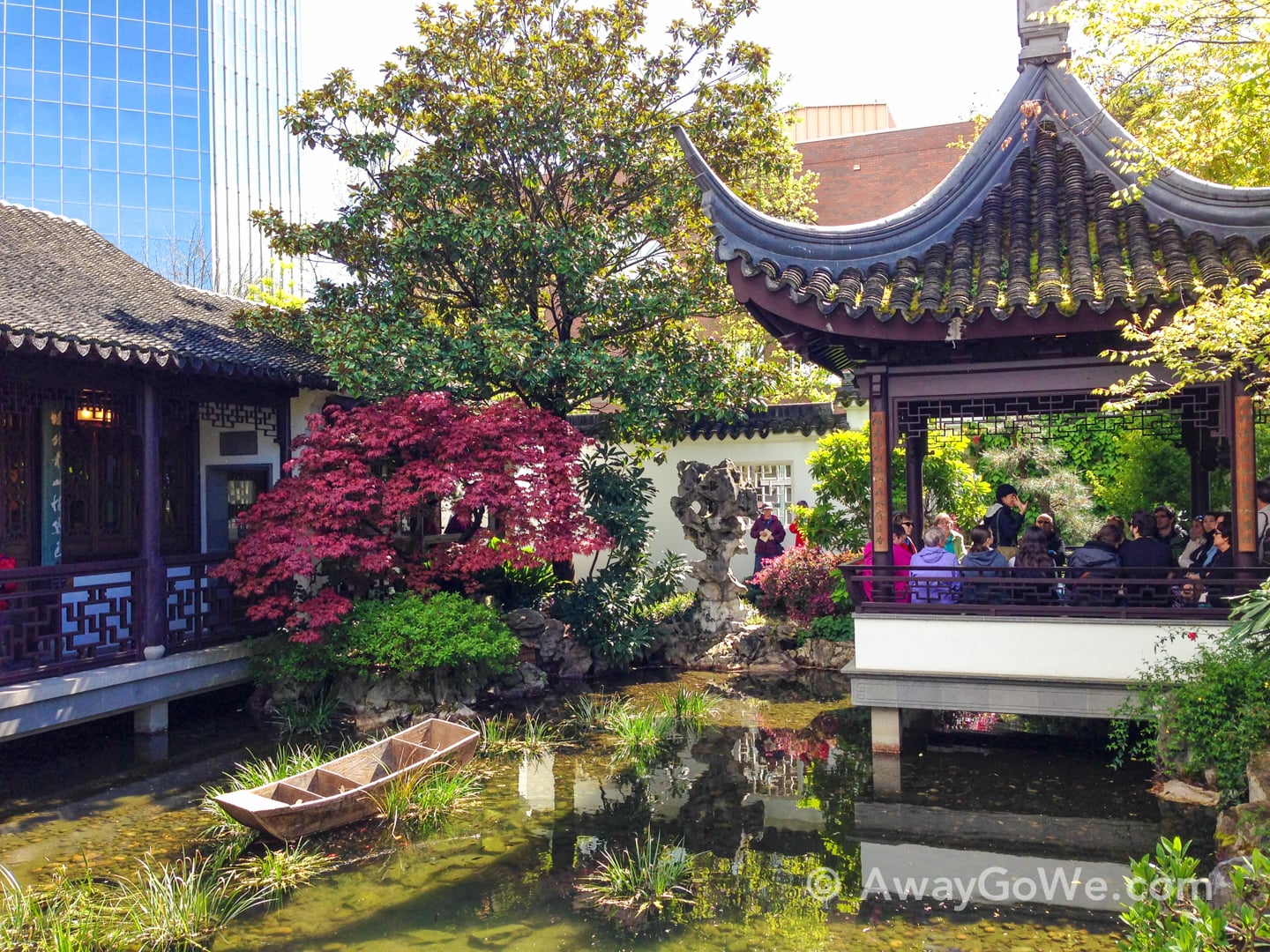
Operating Hours
Winter Hours Lan Su is open to the public daily from 10 am to 4 pm in the winter months (last admission is at 3:30 pm). The garden is closed on Thanksgiving, Christmas, and New Year’s Day.
Summer Hours In the summer months, Lan Su is open daily from 10 am to 6 pm (last admission at 5:30 pm).
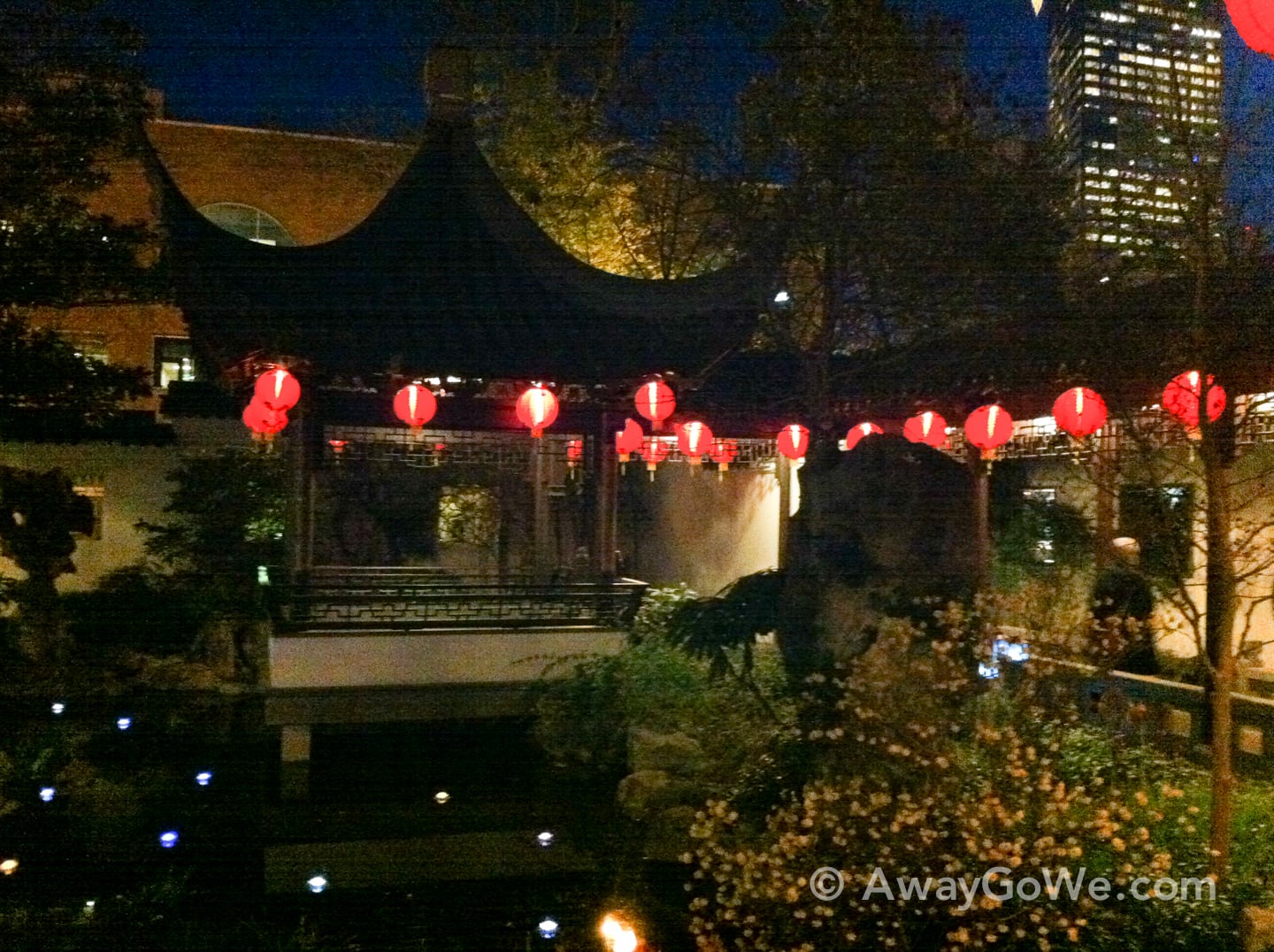
Admission
- Admission is $14.
- There are discounts for Seniors 62+ ($13), Students 18+ with ID ($13), and Youth ages 6 to 18 ($11), as well as through the Museums for All program.
- Children 5 and under are Free.
- Members are also free!
🔥 HOT TIP 🔥
Our annual membership to Lan Su Chinese Garden came with reciprocal benefits with other high profile attractions in the Portland area, saving us a TON of money and easily paying for our membership in the long run.
Benefits change from year to year, so be sure to ask at the front ticket counter for all the latest.
2024 Updates
As of January 2024, the Teahouse is temporarily closed for renovations. It’s unclear when it will reopen.
About Lan Su Chinese Garden
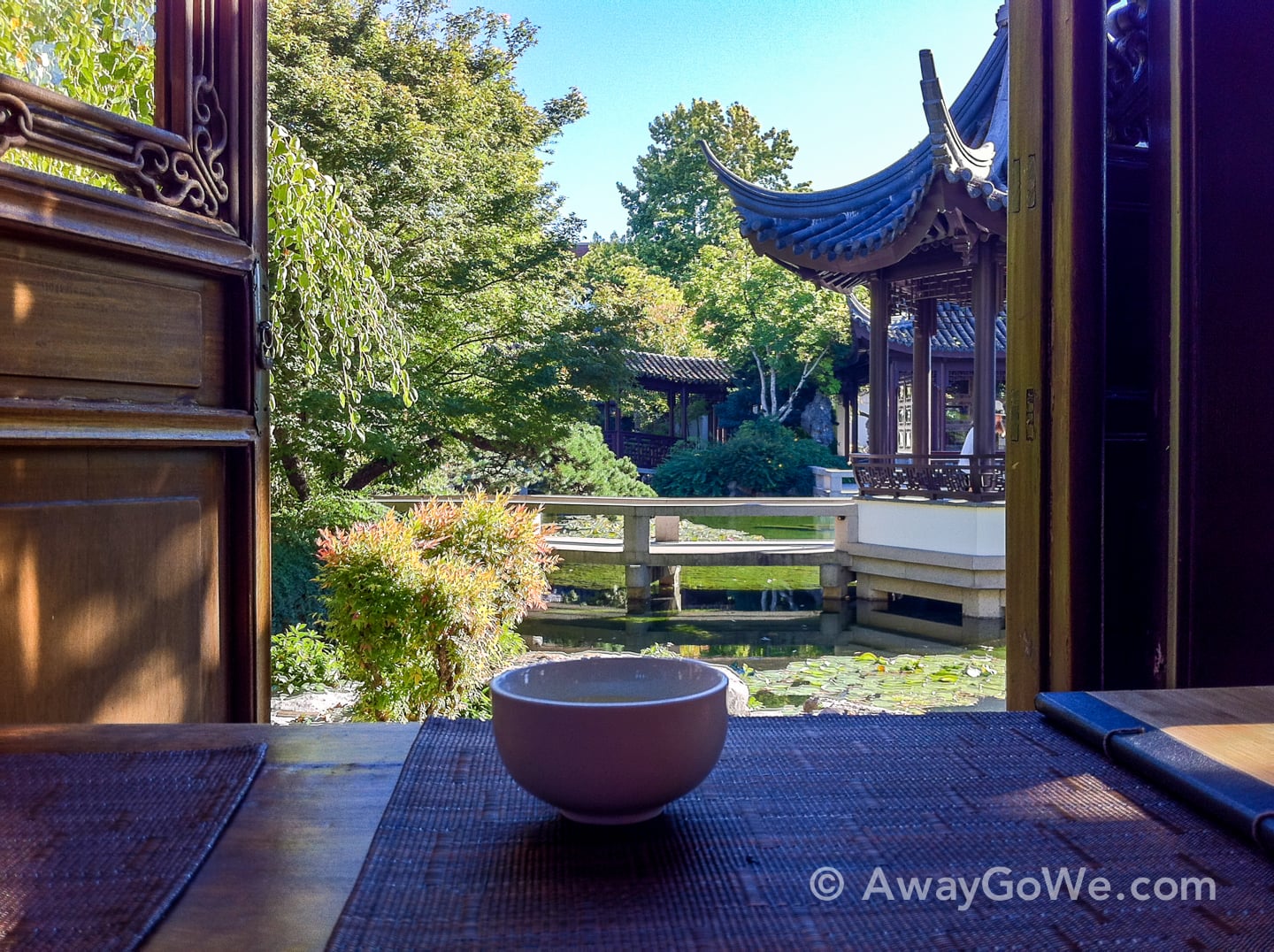
What is the Lan Su Chinese Garden?
Well, it’s a Chinese garden in Portland’s Chinatown district built in the Classical style.
Historically, classical gardens in China were commissioned by emperors and/or members of the imperial family (scholars, poets, government officials, soldiers, merchants, etc.) for pleasure, but also to impress visitors to their already opulent residences.
A typical classical garden is enclosed by walls and includes a variety of structures in addition to trees, flowers, ponds, and rocks carefully placed throughout the property.
The garden is meant to convey an idealized miniature landscape embodying balance and encouraging reflection.
In classical times, the deeper you were permitted into the garden was a reflection of the depth of your relationship with the owner of the residence.
A Trans-Pacific Collaboration
Constructed well outside of the classical period in the year 2000, Lan Su Chinese Garden is neither a true Classical garden nor anybody’s residence.
Yet, it is a remarkably accurate and faithful representation of one.
What immediately struck us on our first visit to Lan Su was just how closely the various aspects of the garden reminded us of the classical gardens scattered across Suzhou, a UNESCO-designated city in China known for its collection of Classical Gardens and one of our favorite stops during our time in China.
We quickly learned in one of the pavilions at Lan Su that the striking resemblance was not a mere coincidence, but a result of a trans-Pacific partnership and careful planning.
Suzhou just so happens to be Portland’s Chinese Sister City, and nearly all of the stones, rocks and woodwork for the pavilions and teahouse were shipped to Portland from Suzhou!
Even the artisans were shipped from Suzhou!
The name—Lan Su—is a reflection of the close relationship between the two cities—it’s a portmanteau combing Port[Lan]d and [Su]zhou. “Lan Su” (蘭蘇) also means arising or awakening orchid in Chinese, so the garden is sometimes called the Garden of Awakening Orchids.
Suzhou and Portland became Sister Cities in 1988, and ground was broken on the garden 11 years later.
It took 65 artisans from Suzhou 14 months to construct the garden, utilizing 500 tons of rock, including Scholar’s rock from Lake Tai in China.
The garden was officially named Lan Su on its 10th anniversary in 2010.
How we discovered Lan Su
Every Portlander (and Oregonian for that matter) seems to have heard of the Japanese Garden. Along with the International Rose Test Garden and Powell’s City of Books, it’s a top draw for tourists visiting the area.
But the Chinese Garden? Not so much.
That’s hard for us to believe now, as Lan Su Chinese Garden has become our favorite space in all of Portland!
Lori and I have loved all-things-classical-Chinese-garden ever since visiting our first (and second, and third, and fourth) in Shanghai and Suzhou in 2012.
Then, on a trip to Vancouver, BC in 2013, we made sure to visit that city’s Chinese Garden, which turned out to be one of the highlights of that trip as well.
We were fortunate to discover Lan Su early on in our move to Portland and wise enough to purchase an annual membership on our first visit (even before stepping foot in the garden)—easily one of the best investments we’ve ever made.
Since then, Lori and I have visited Lan Su Chinese Garden over a dozen times.
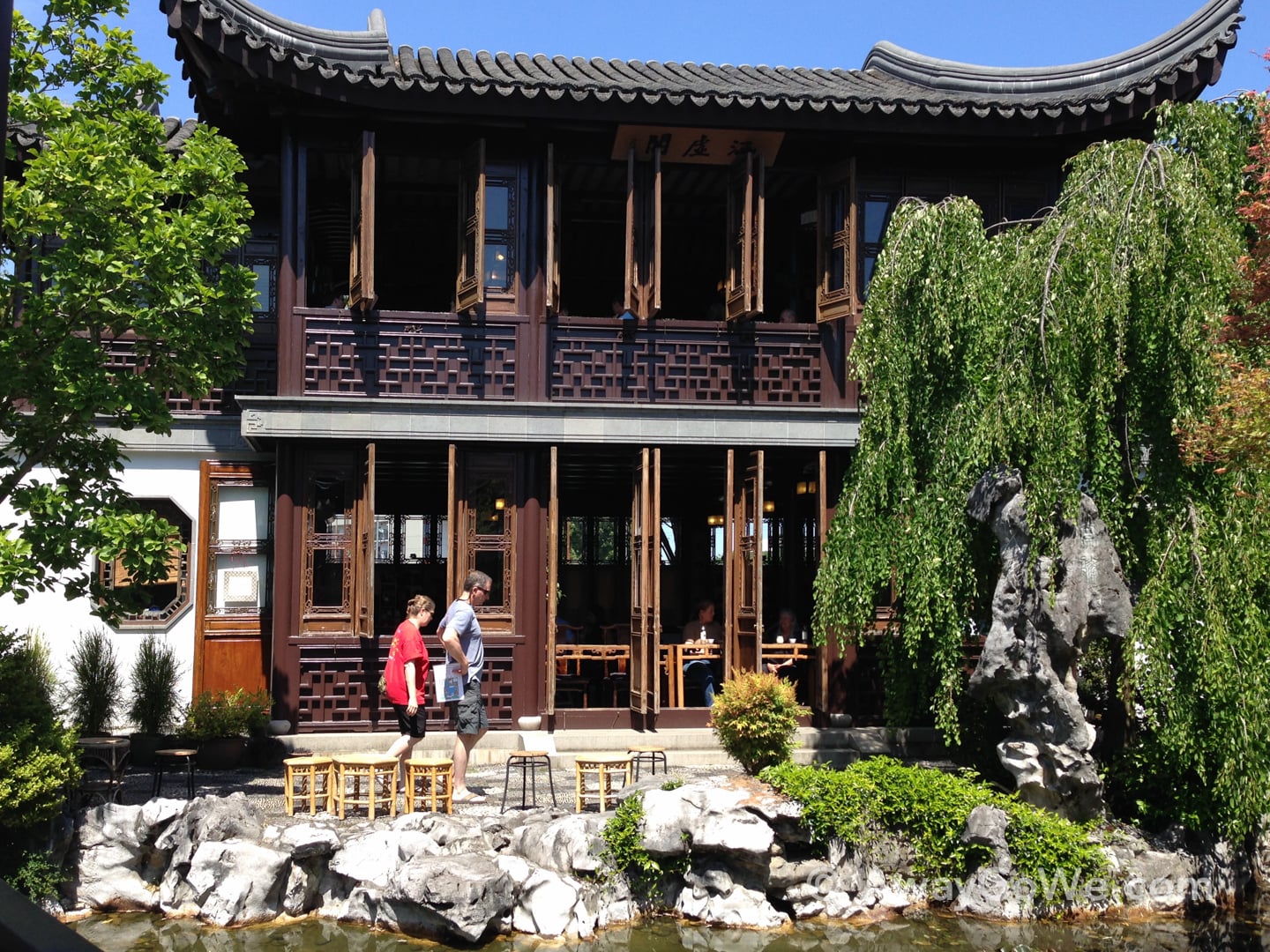
Lan Su Teahouse
One of the centerpieces in the garden is the Tower of Cosmic Reflections—The Lan Su Chinese Garden’s commanding two-story tea house.
Operated by Portland’s own Tao of Tea, it is an awesome place to rest and reflect, try a variety of loose leaf Chinese teas in the traditional method, and listen to live traditional Chinese music during much of the year.
Ironically, after six weeks spent in China, it wasn’t until we had tea at Portland’s Lan Su that we finally learned the proper way to use a gaiwan (traditional clay teacup with lid). This was largely due to the language barrier in China, but we wish we had known sooner!
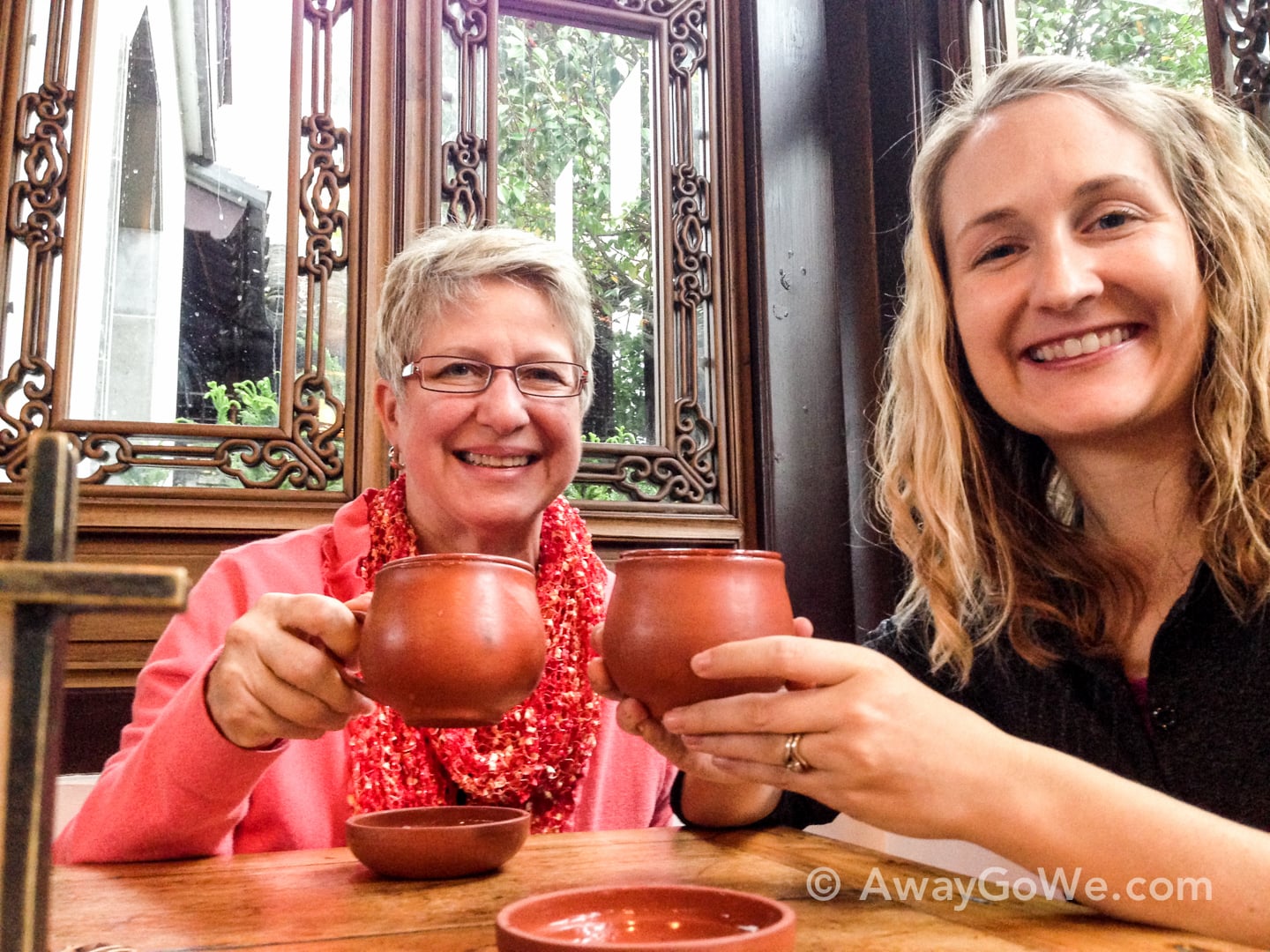
Lan Su Through the Seasons
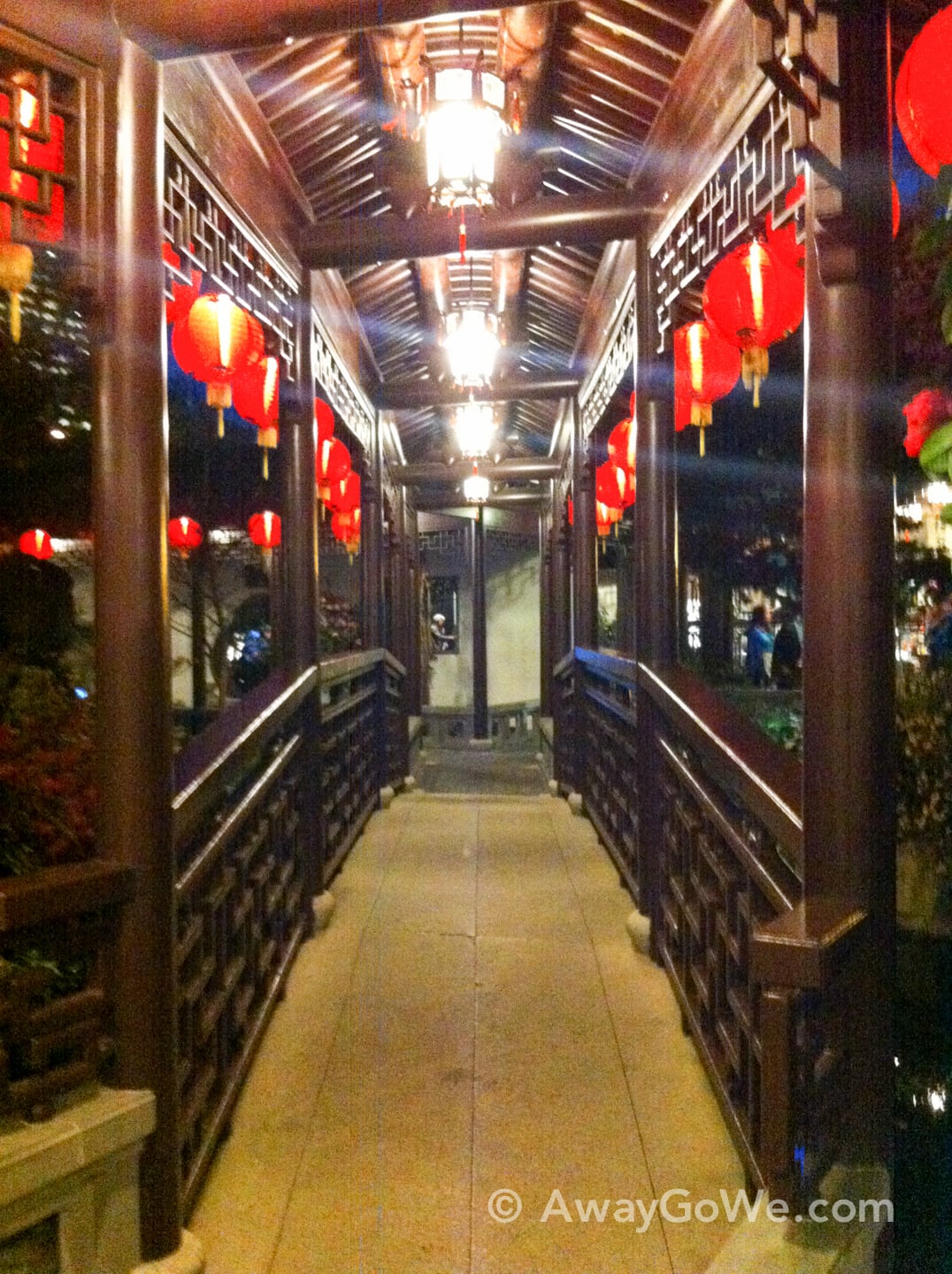
Lunar New Year Festivities!
Lunar New Year (Chinese New Year) Lantern Viewing kicks off the annual calendar of events with one of the most colorful displays of the year, making February/March a popular time to visit the garden.
It was cold, dark, and we weren’t sure what to expect, so I opted not to bring my camera. Big mistake. Fortunately my phone was on hand to snap some pics…sort of.
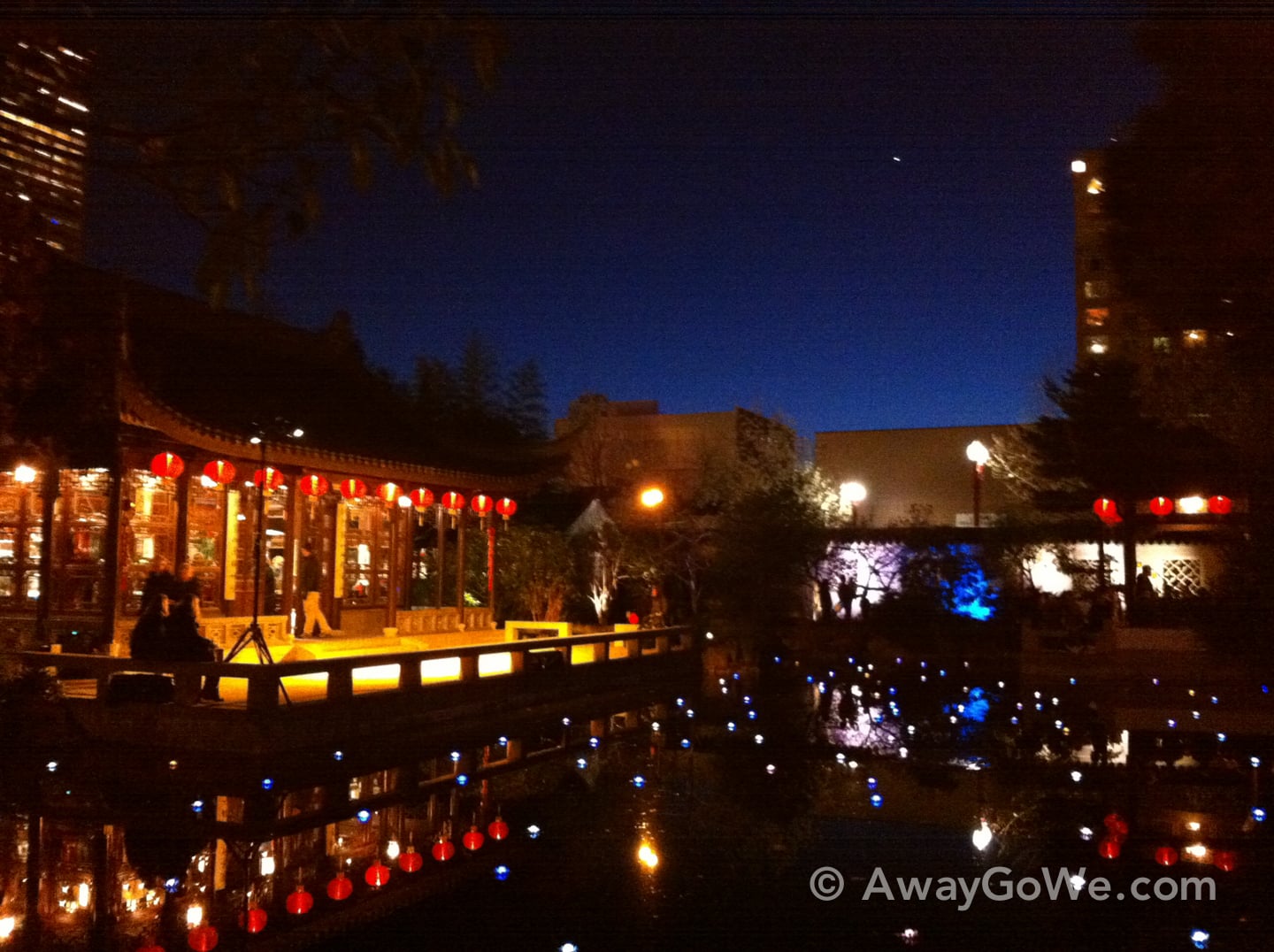
For our first Chinese New Year at the garden, we opted for general admission, which meant standing in the freezing cold between three very excited Chinese people and a very abusive bush.
Still, it was well worth the visit.
The Lan Su Chinese Garden is rarely open past dark and never decorated as much as during Lunar New Year celebrations.
And the dancing and dragon and drumming performances were quite entertaining, particularly when they let the dragon loose to circle the garden and entertain (terrorize) the small children in the crowd. Warmed my heart!
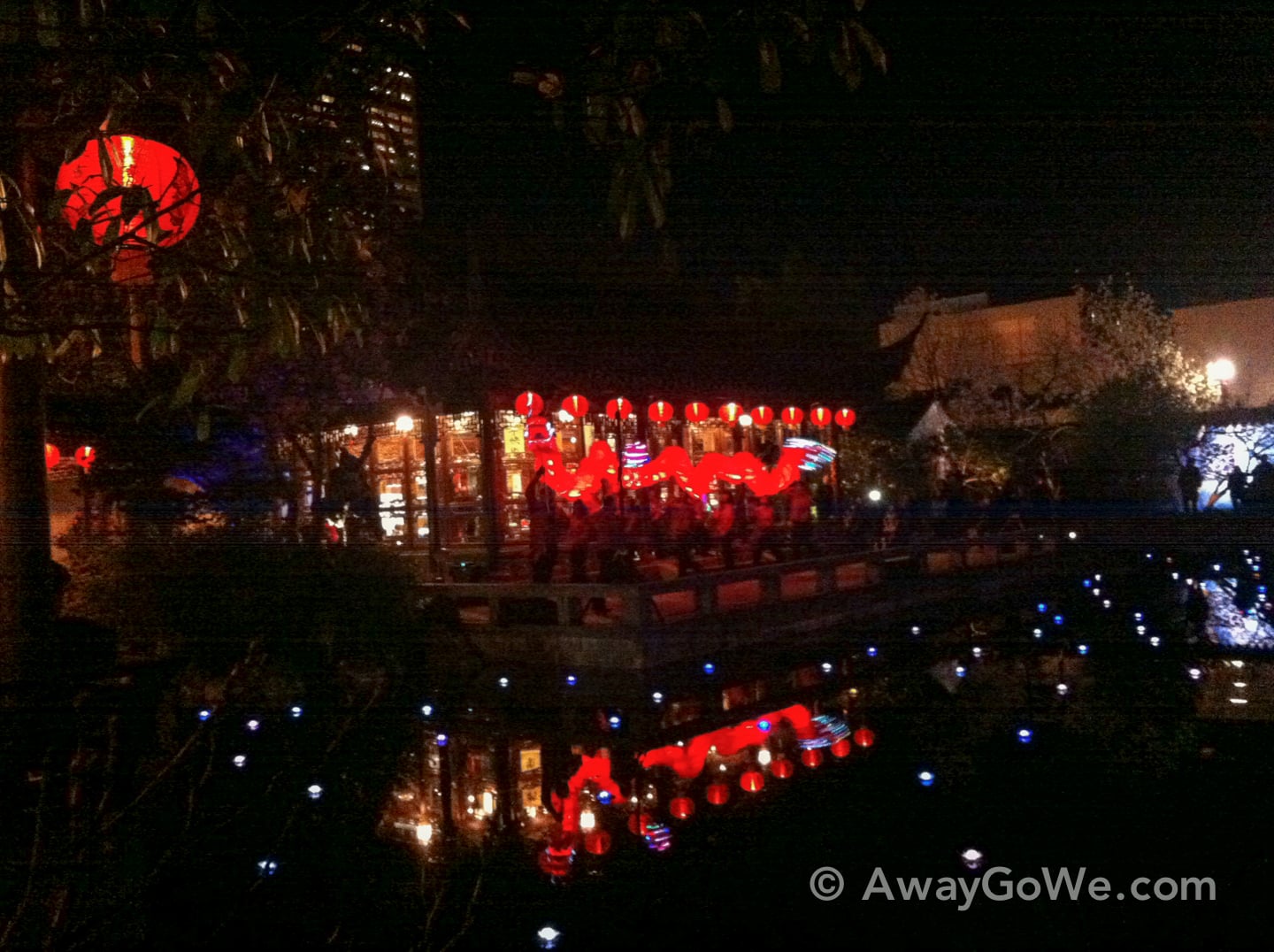
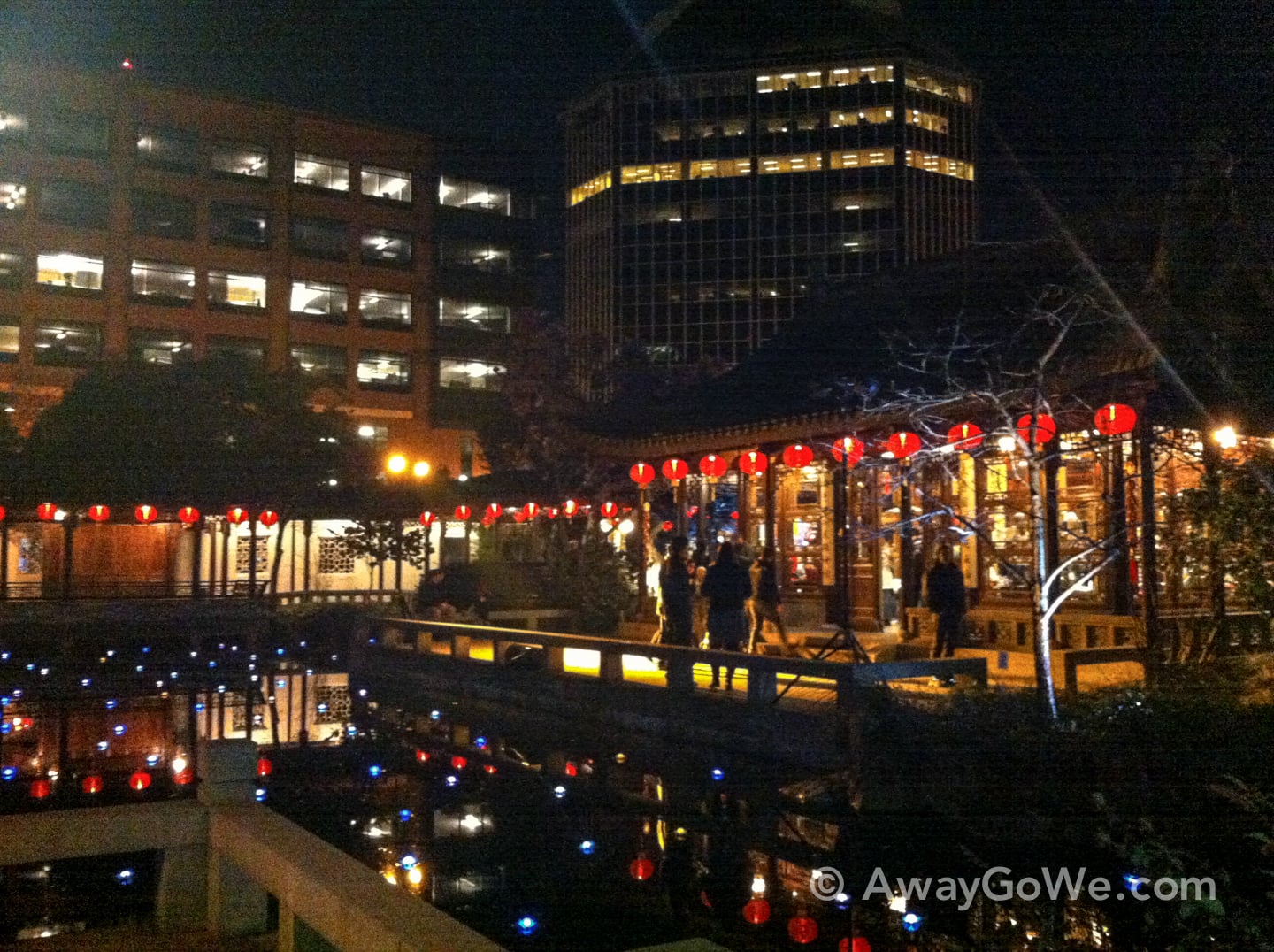
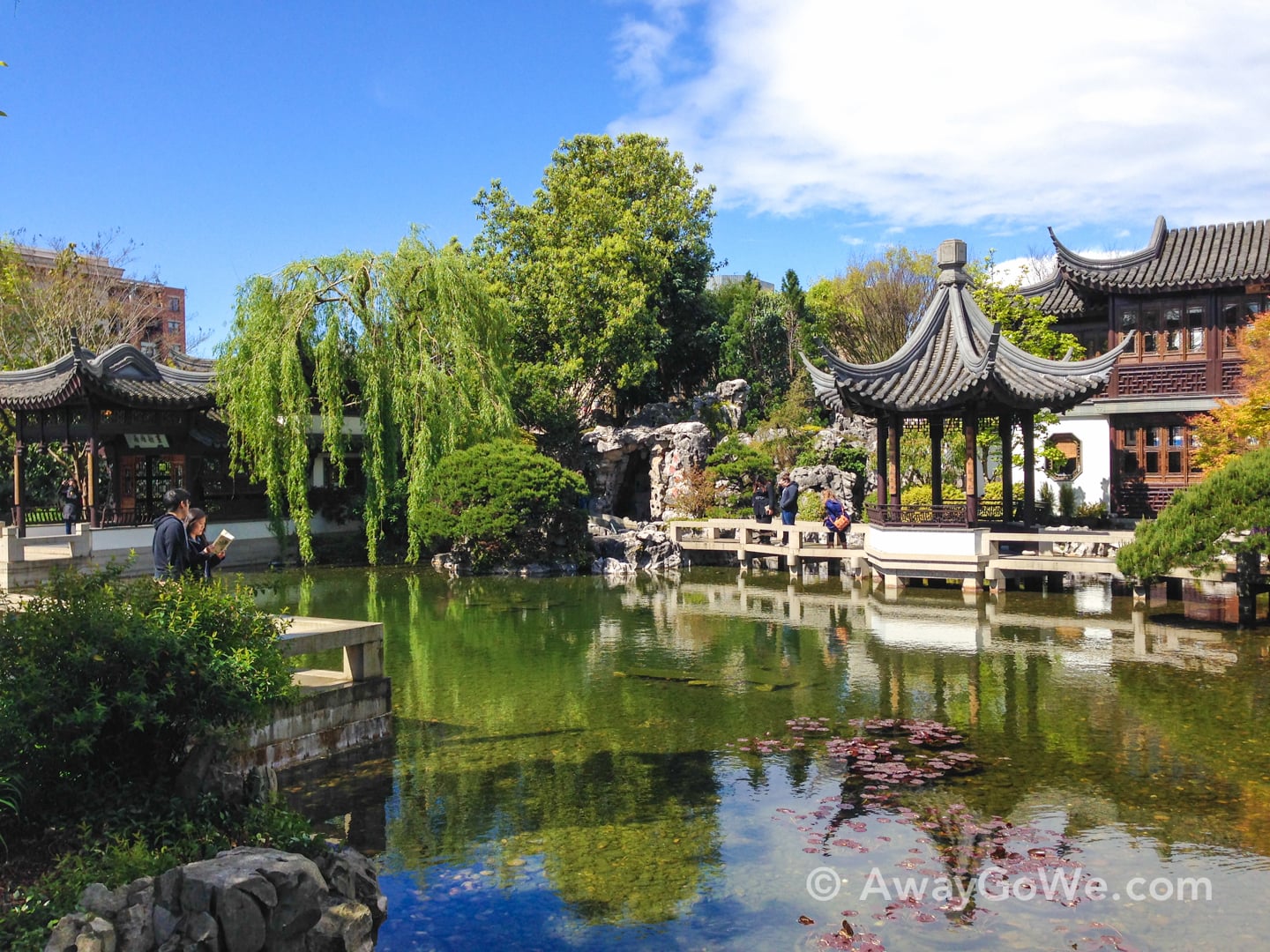
Spring Time
Early spring brings warmer weather and the beginnings of buds and blossoms at Lan Su. This is a great time to visit before the crowds of summer descend.
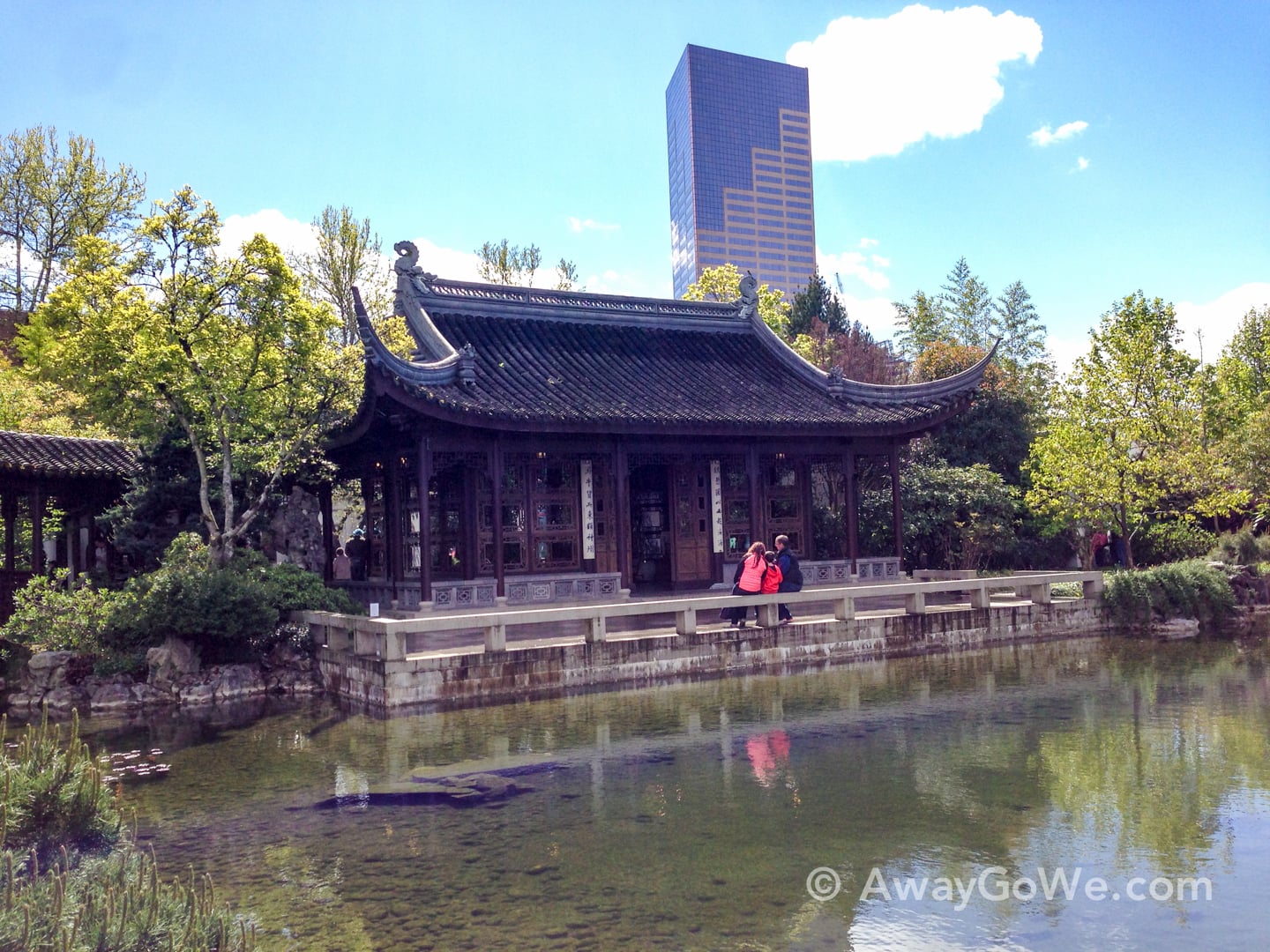
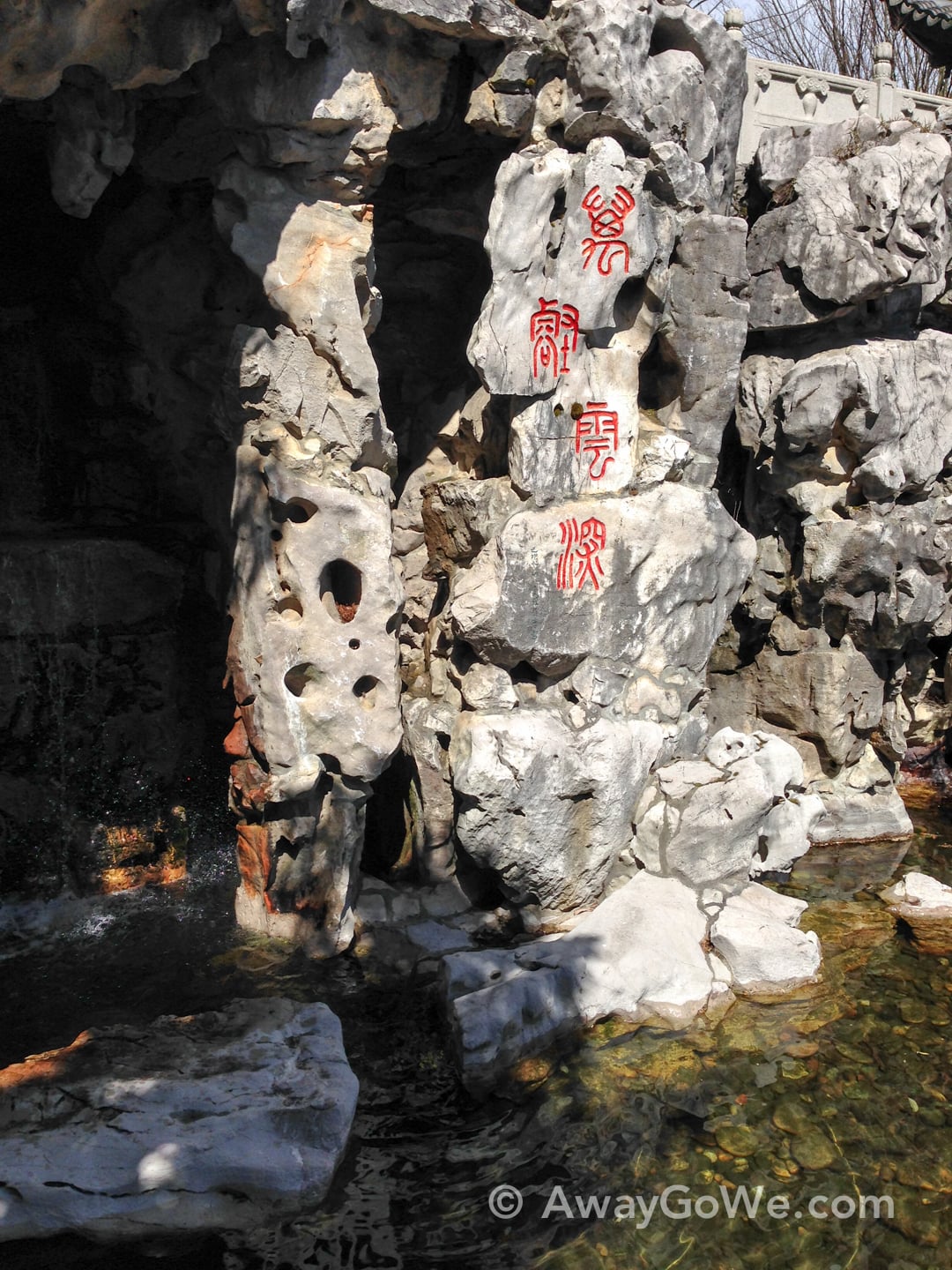
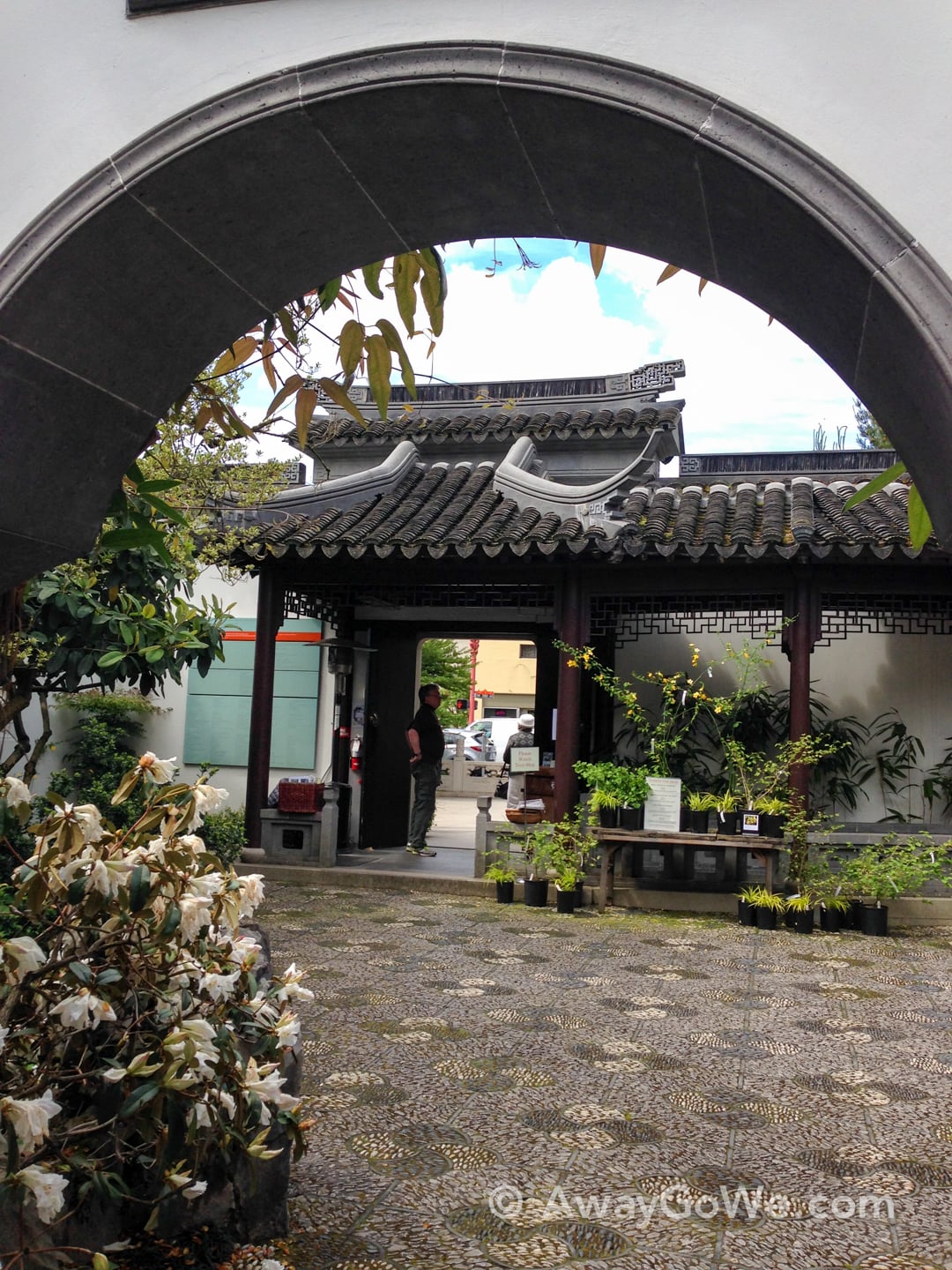
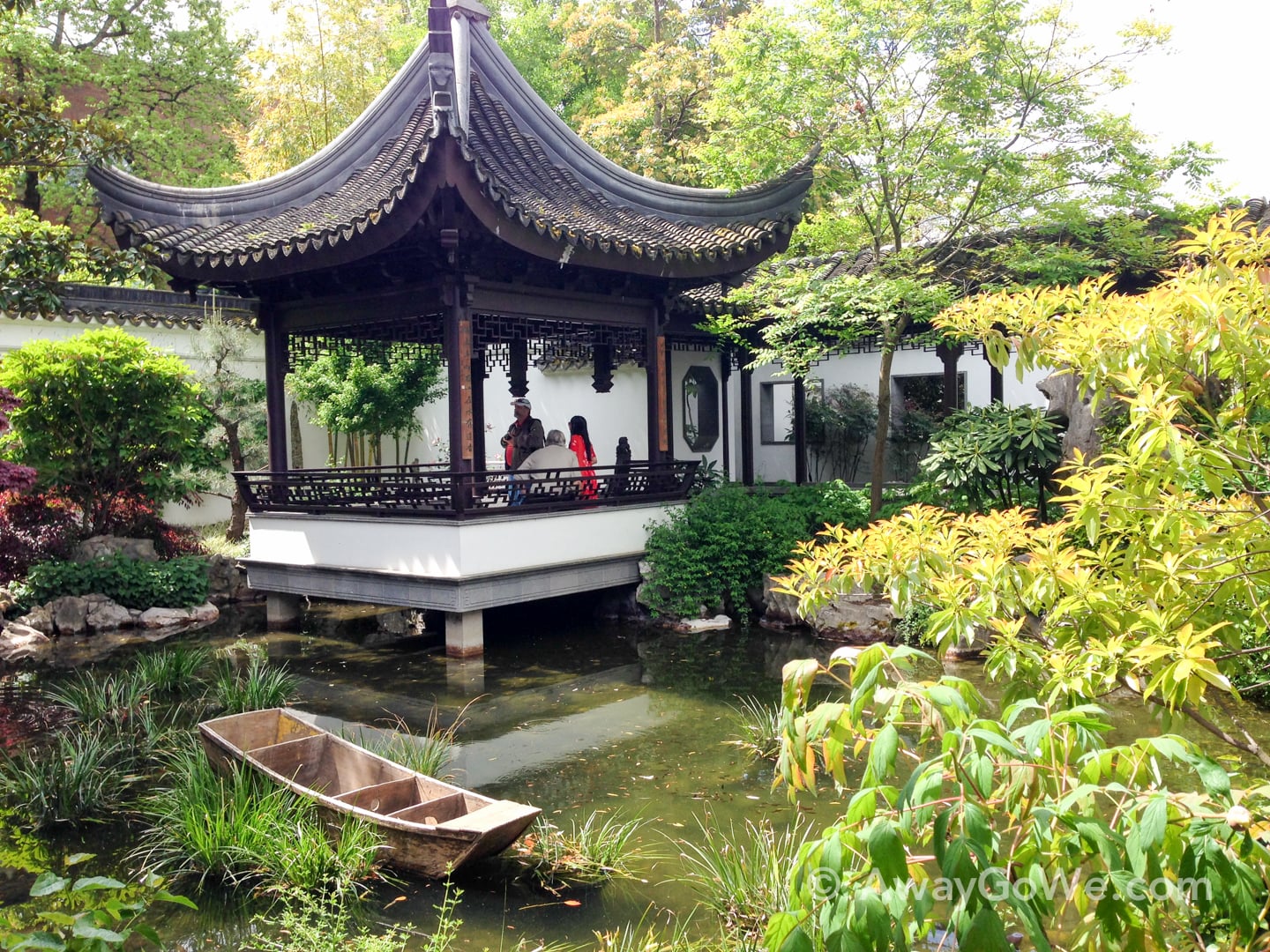
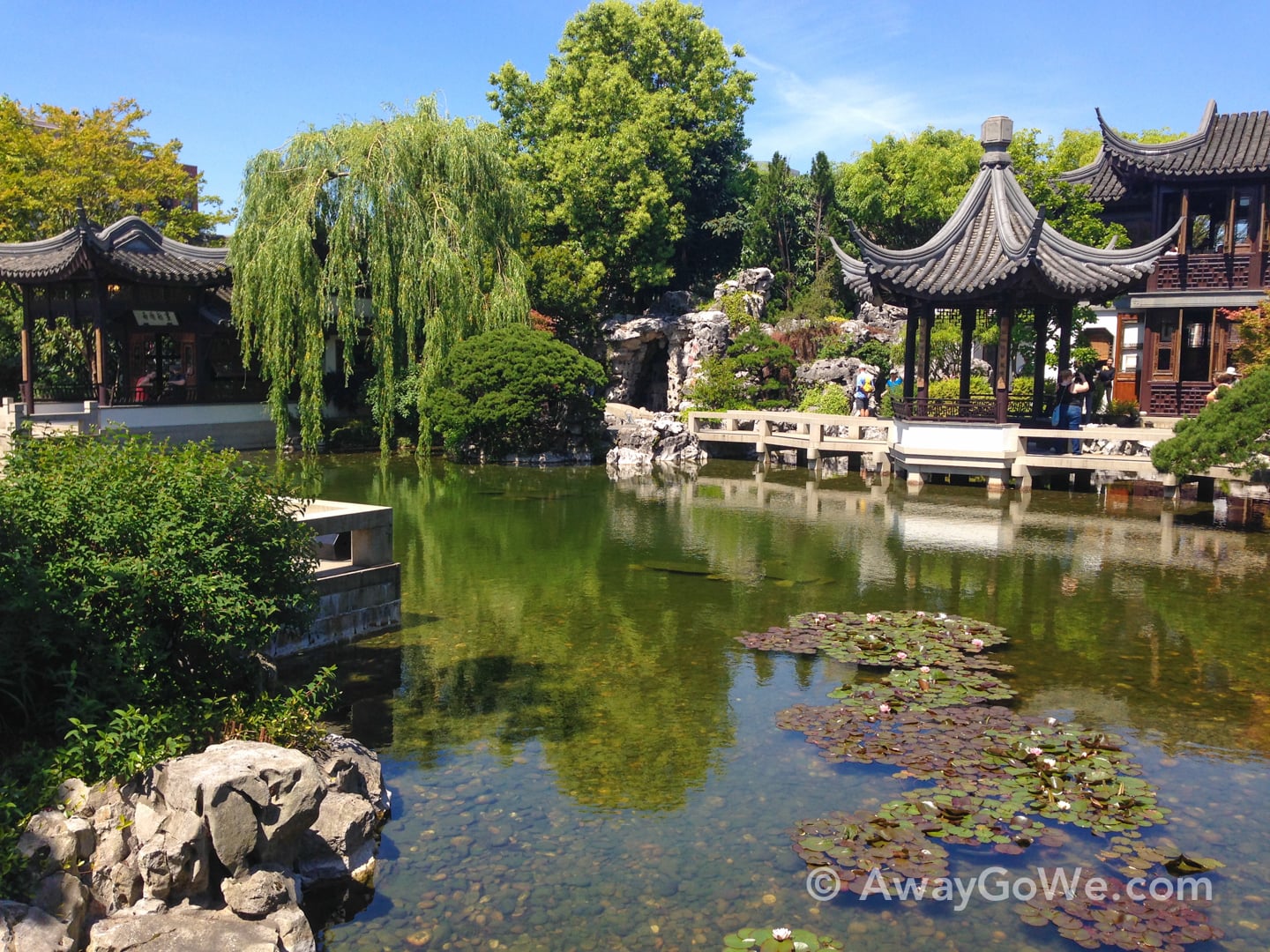
May is a particularly ideal time to visit the garden, as the weather tends to be less rainy and the flowers are in full bloom.
We love taking family and friends to the garden during this time to take advantage of the better weather without the crowds.
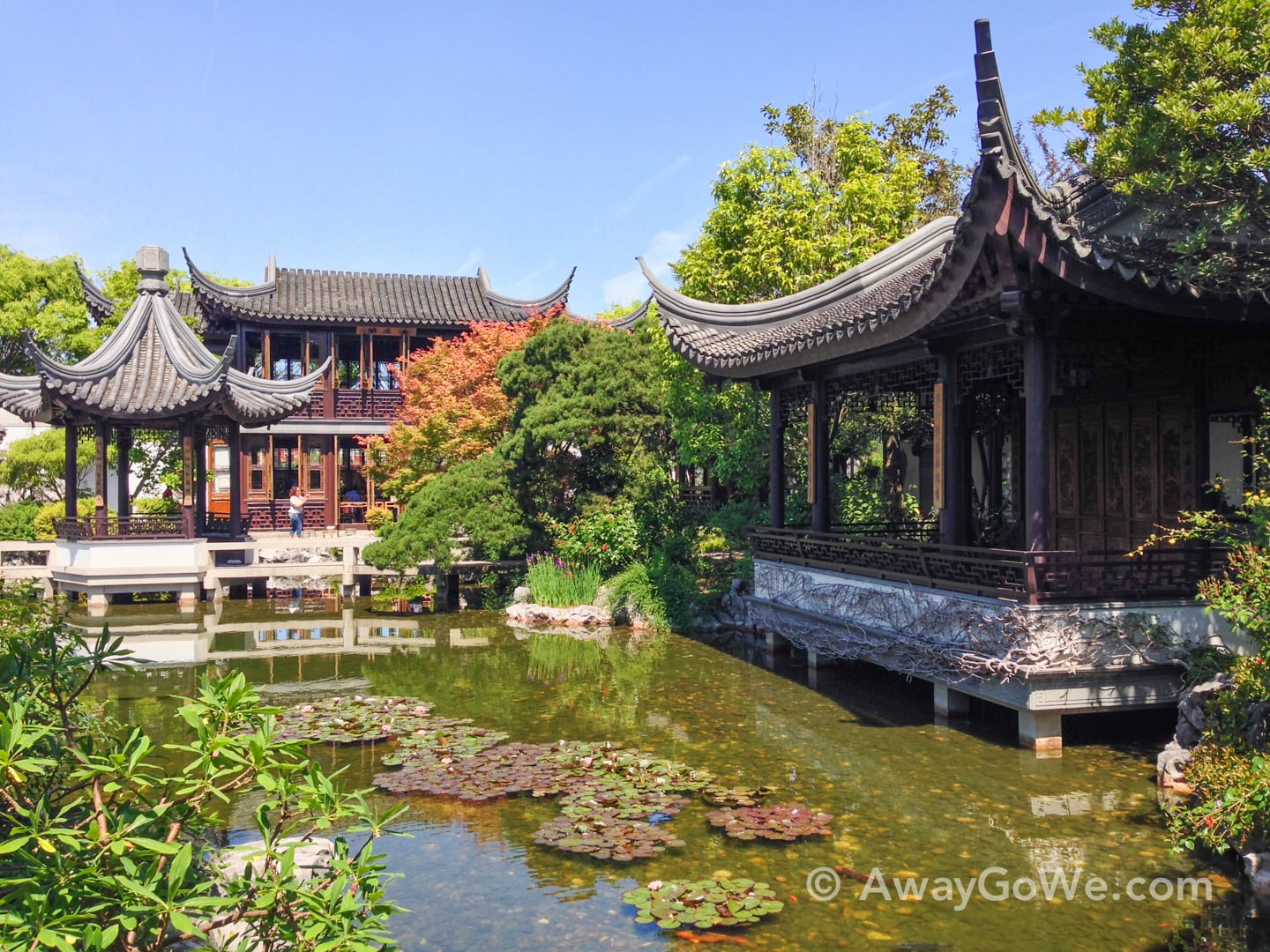
Above, on the right, the Hall of Brocade Clouds watches over Lake Zither. On the left, you’ve got the Moon Locking Pavilion connected to the “mainland” by a series of bridges/walkways, with the Tower of Cosmic Reflections (Tea House) in the background.
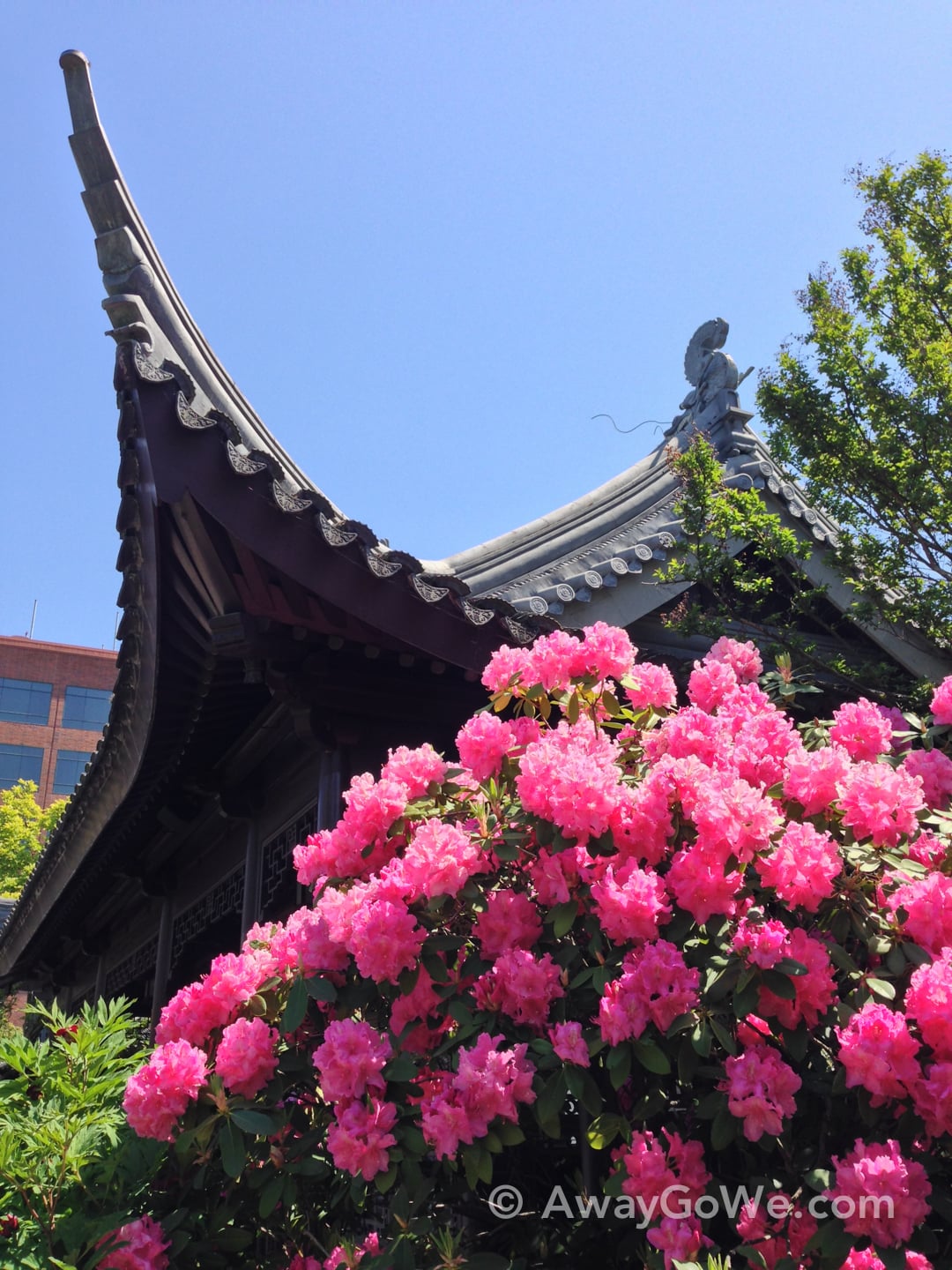
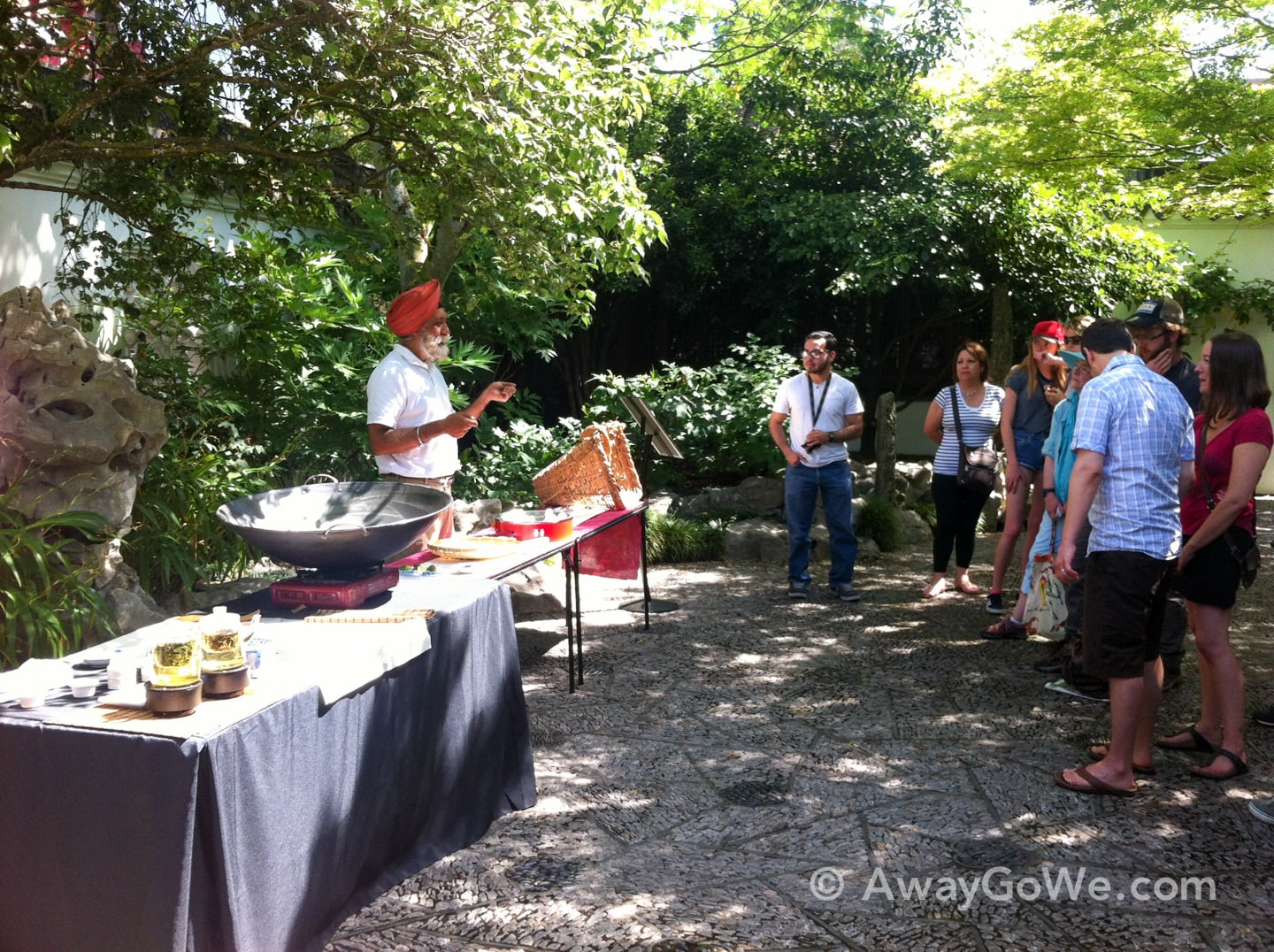
Summer at Lan Su
Summer time is the height of tourist season in Portland, and the number of visitors to Lan Su Chinese Garden certainly reflects this.
On this unseasonably warm and sunny day, we were treated to a tea roasting demonstration in one of Lan Su’s exquisite courtyards (above).
There’s always something fun like this going on at Lan Su in June, July, and August.
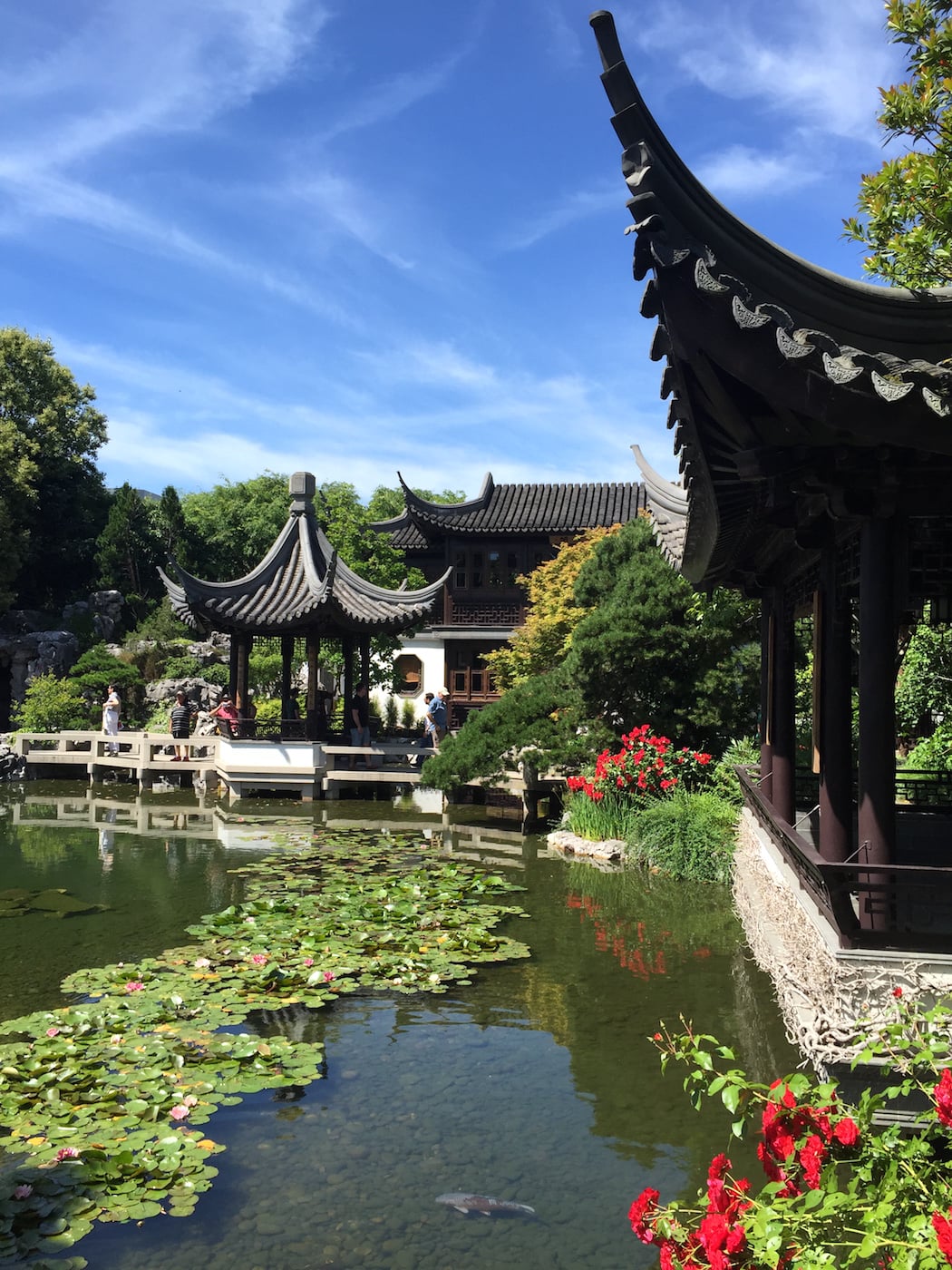
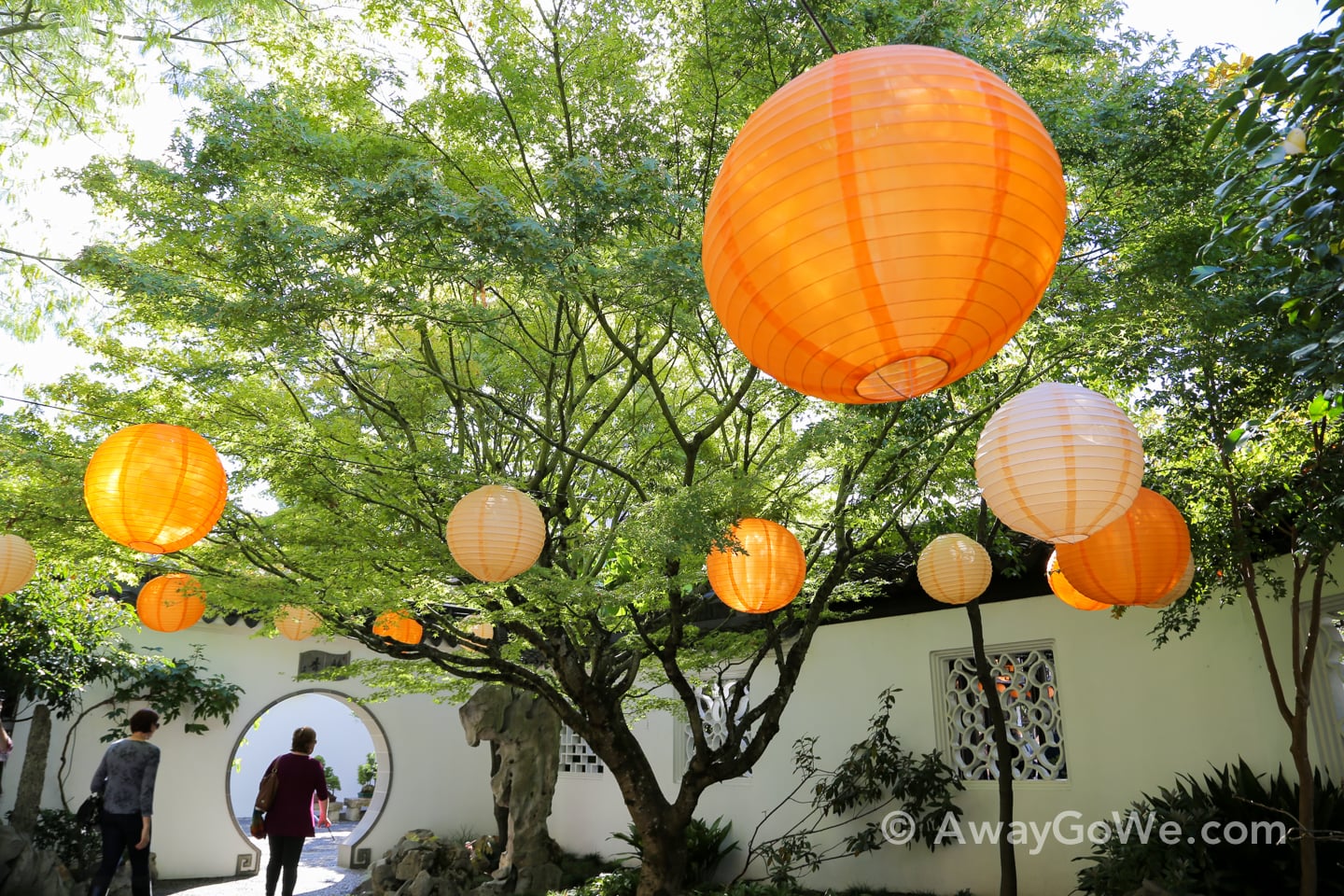
Mid-Autumn Festival
The summer crowds had mostly vanished by mid-September, but returned momentarily for the wonderful Mid-Autumn Festival, Lan Su’s second biggest annual event after Chinese New Years.
My parents were visiting and we thought the festival would be a fun opportunity to take them, along with my sister and our nephew, on a garden visit.
Our nephew, in particular, loved the dragon dancing and the exotic sights, sounds and smells.
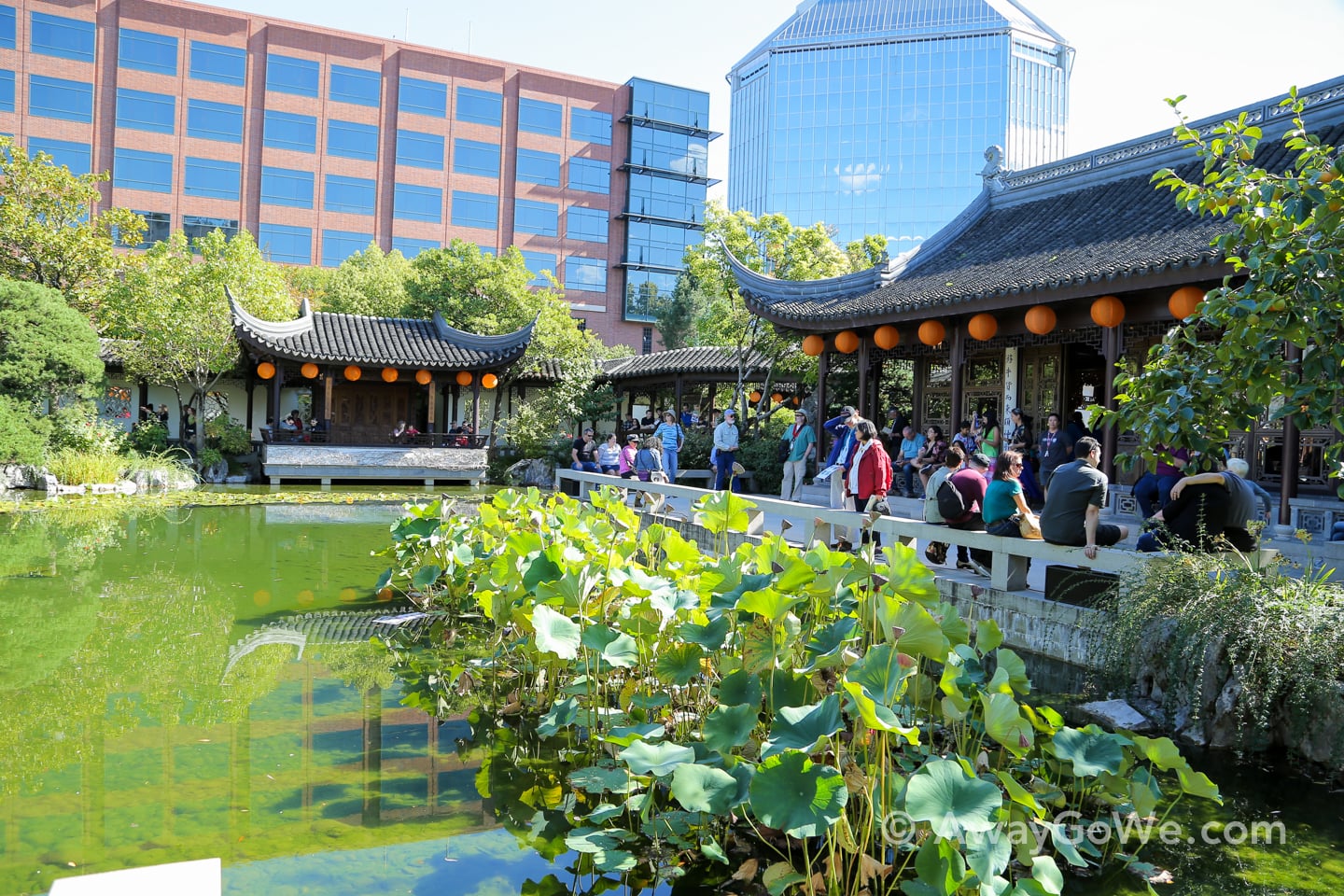
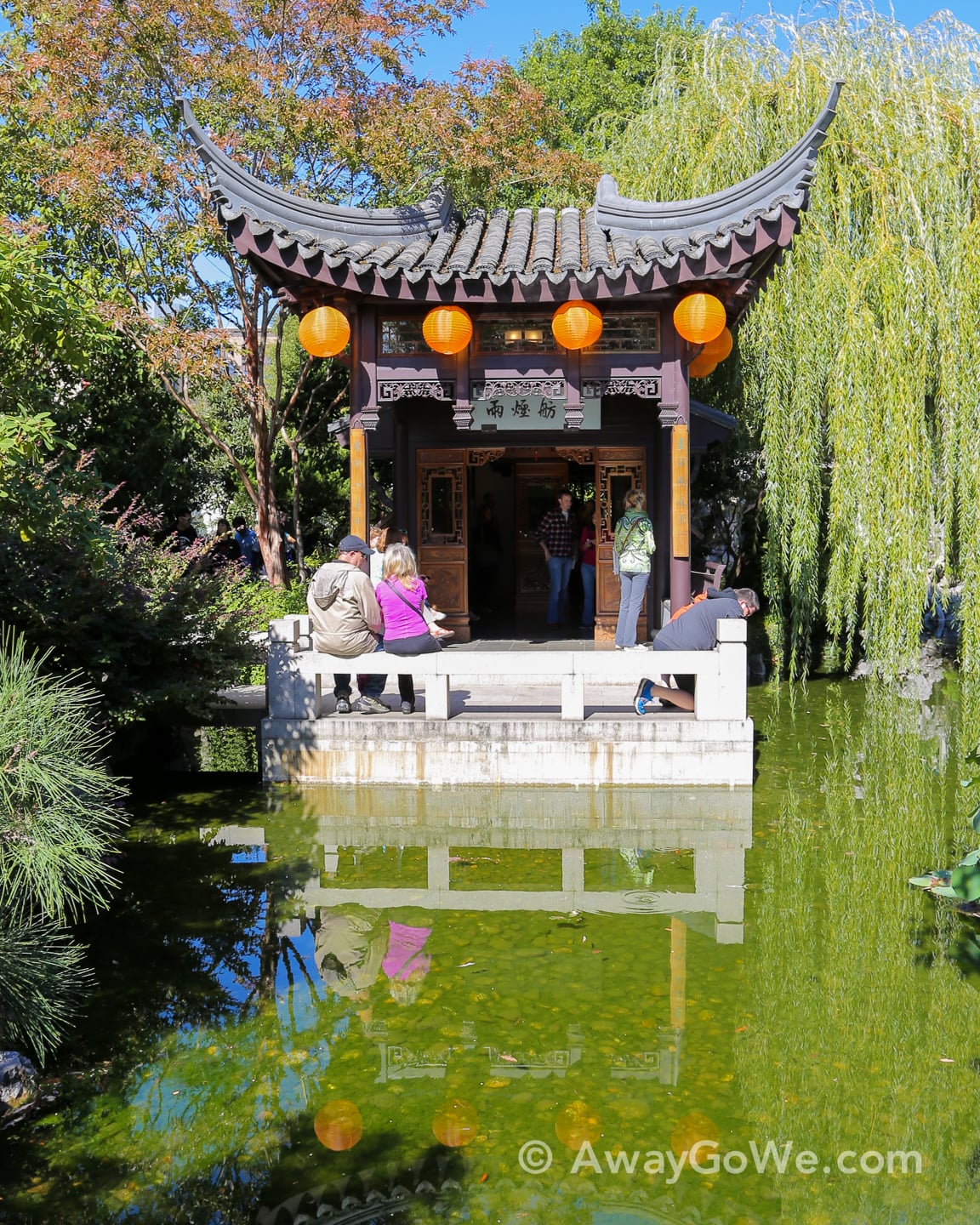
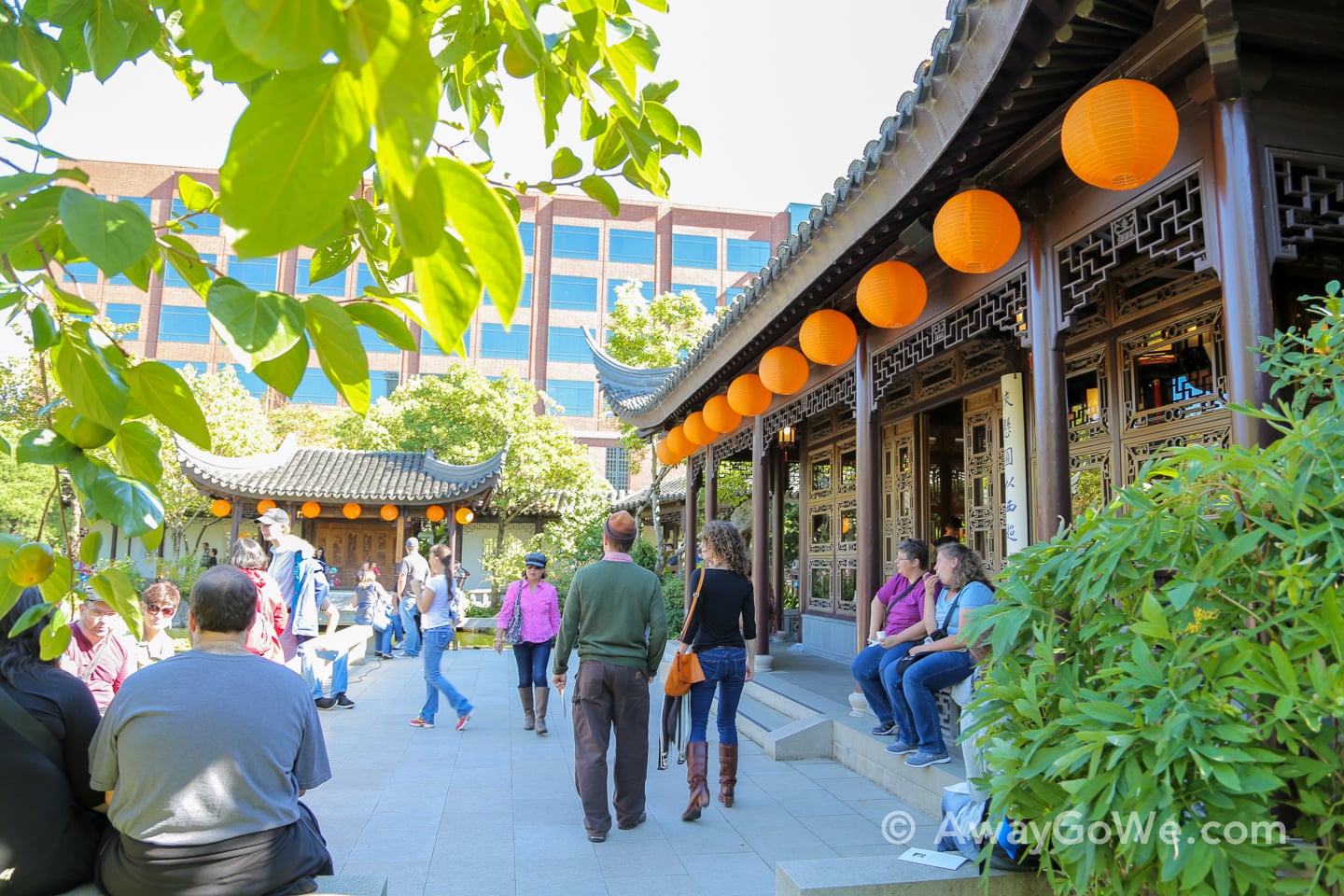
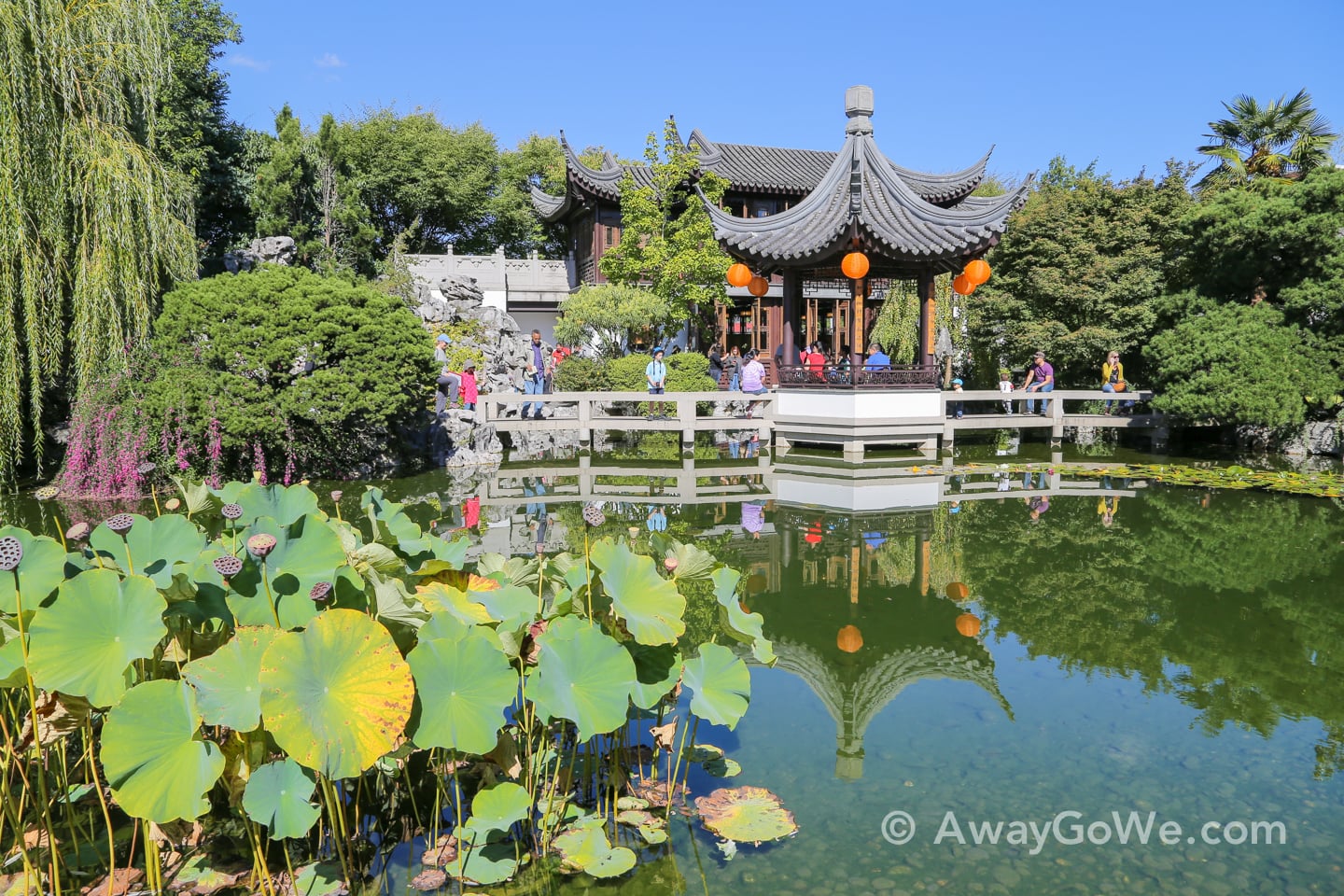
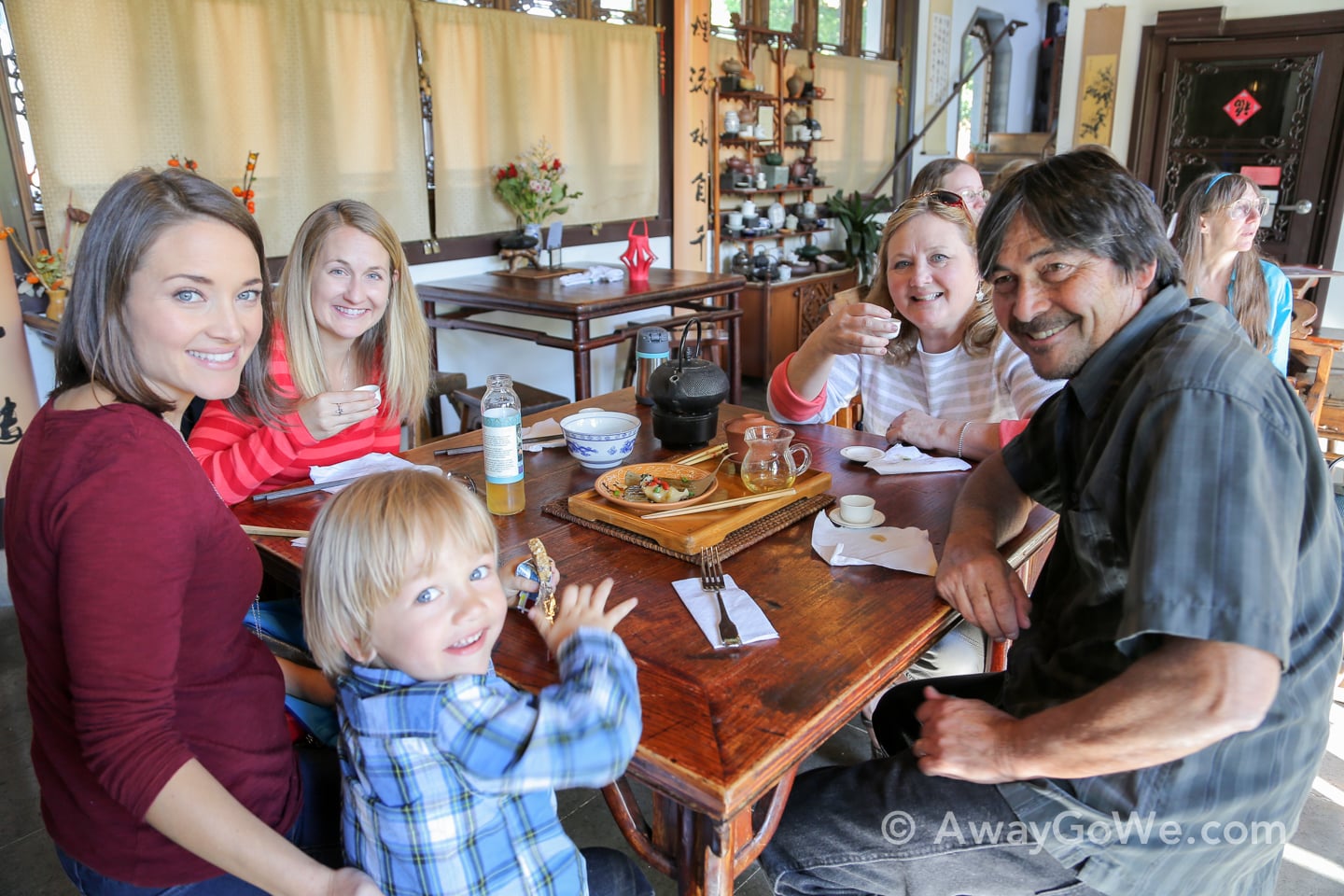
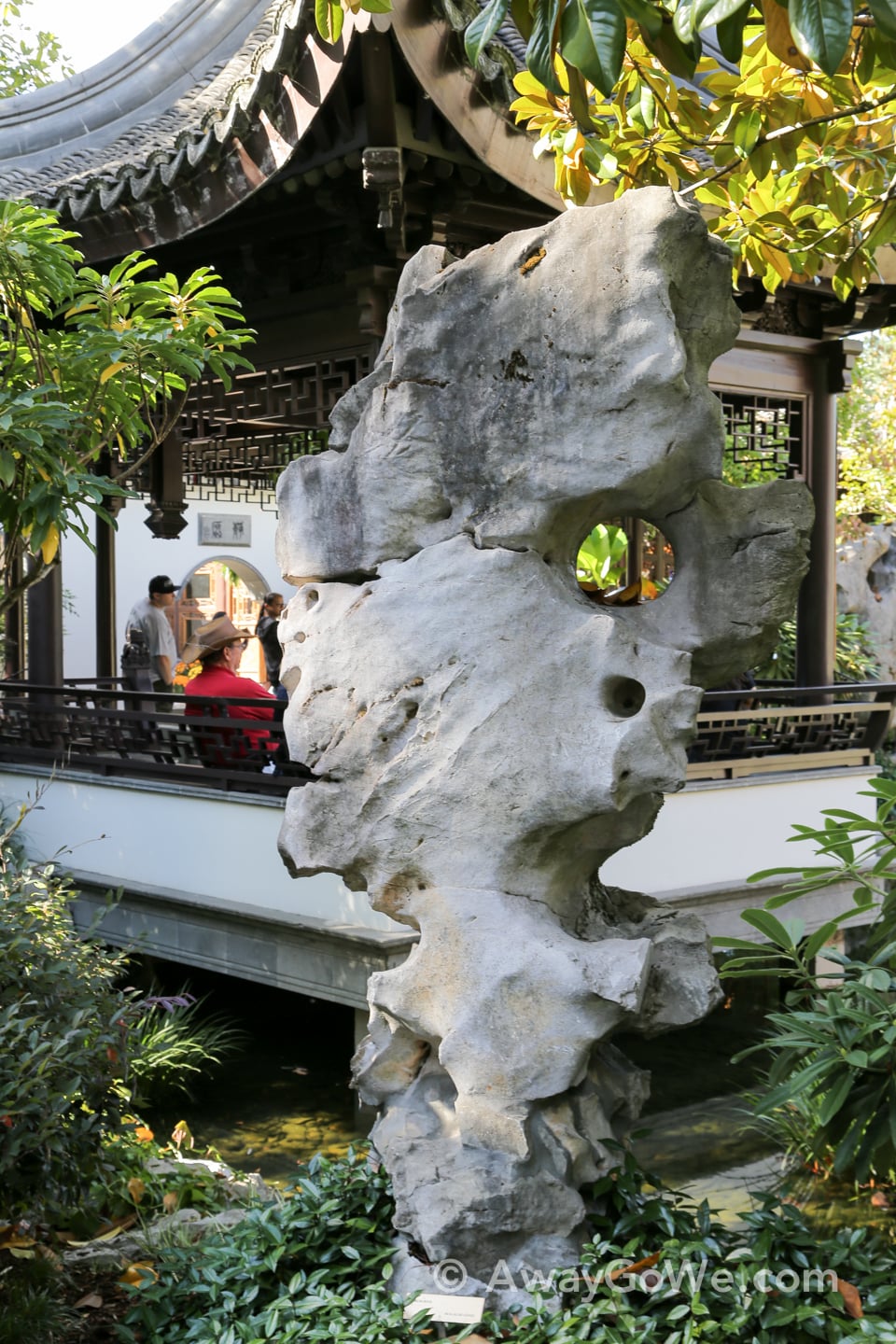
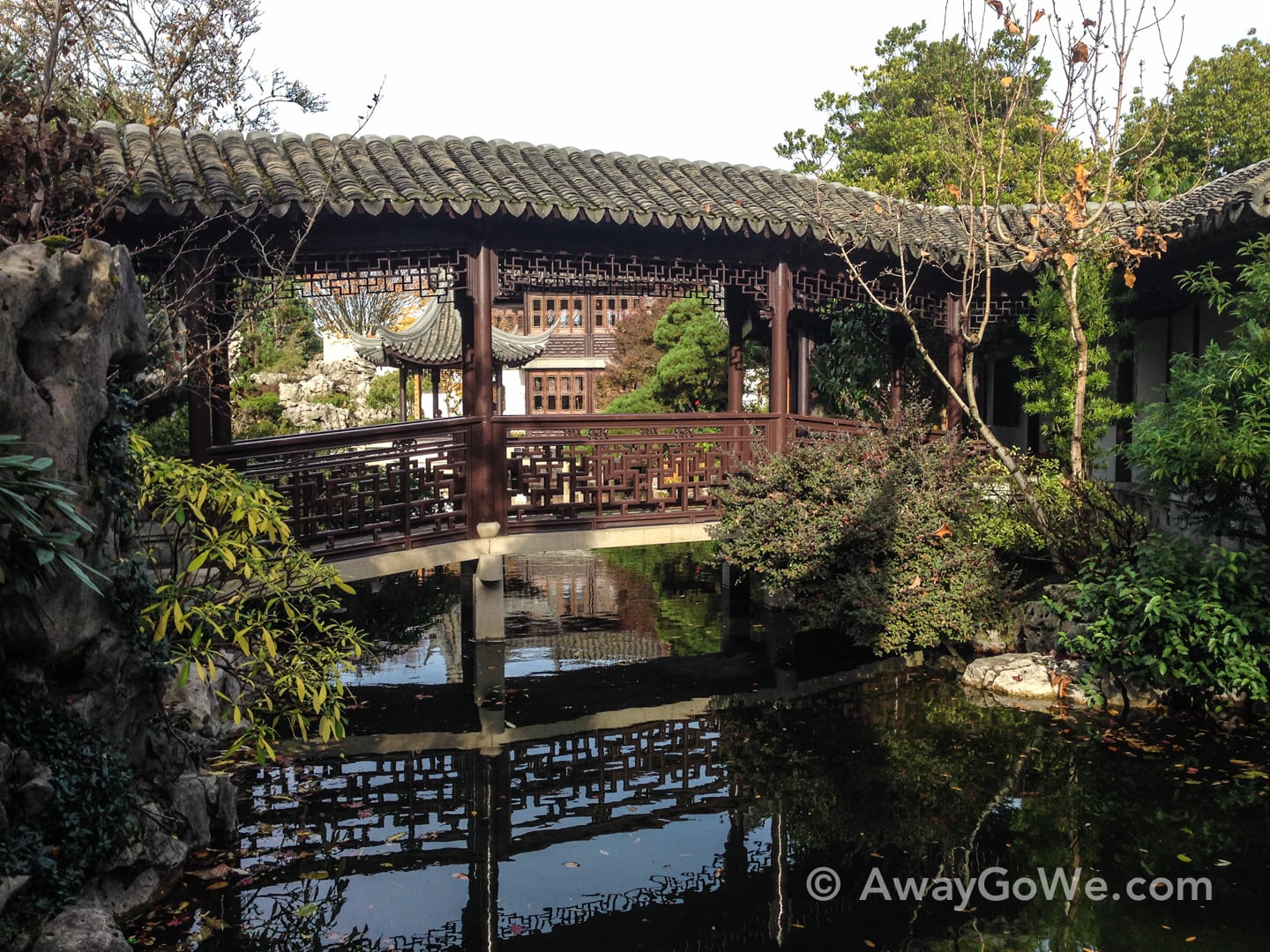
Winter
Late autumn and winter are a time of stillness and reflection at the garden, as the leaves become awash in bright color, crowds become sparse, and the chilly weather arrives.
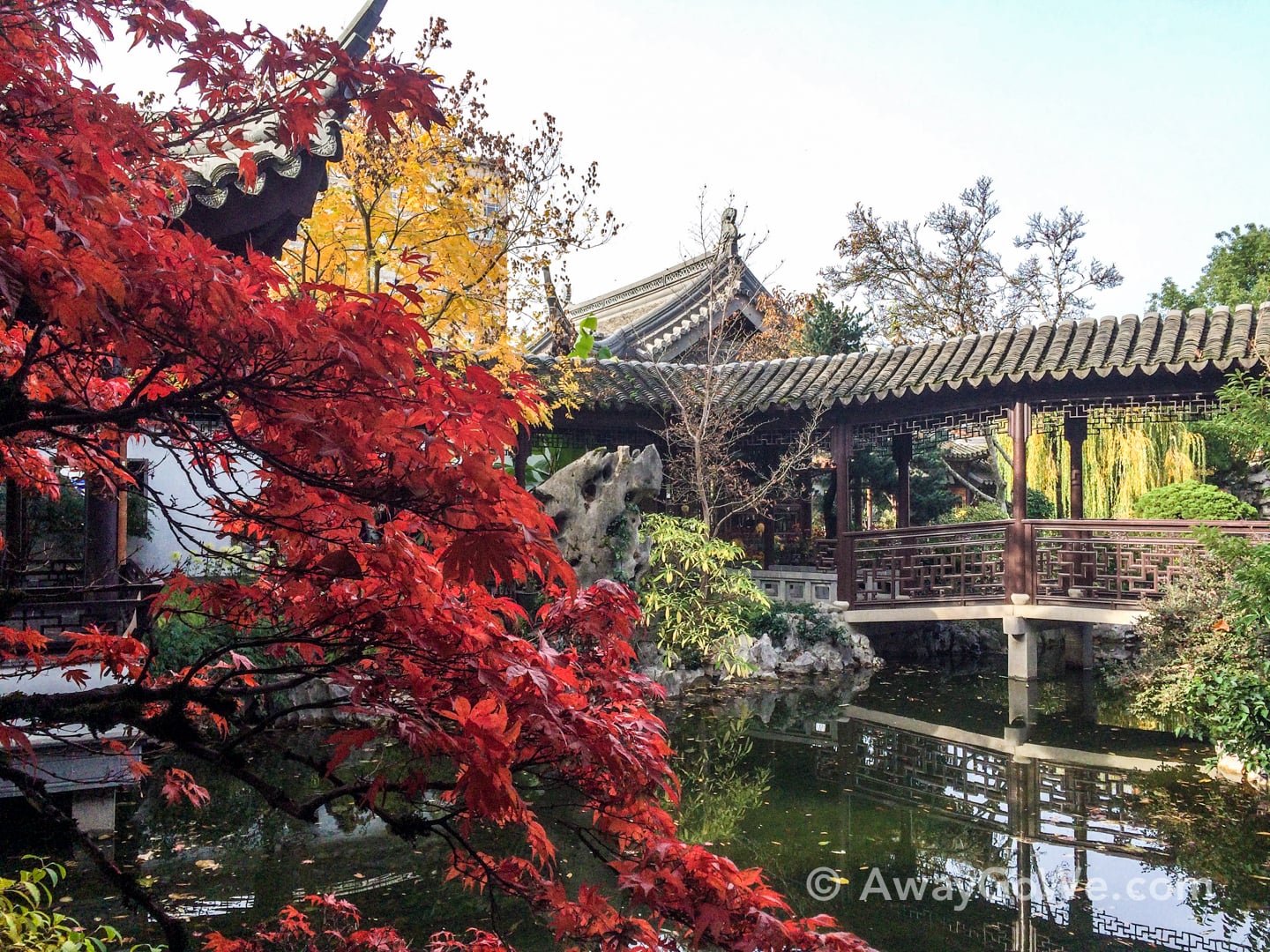
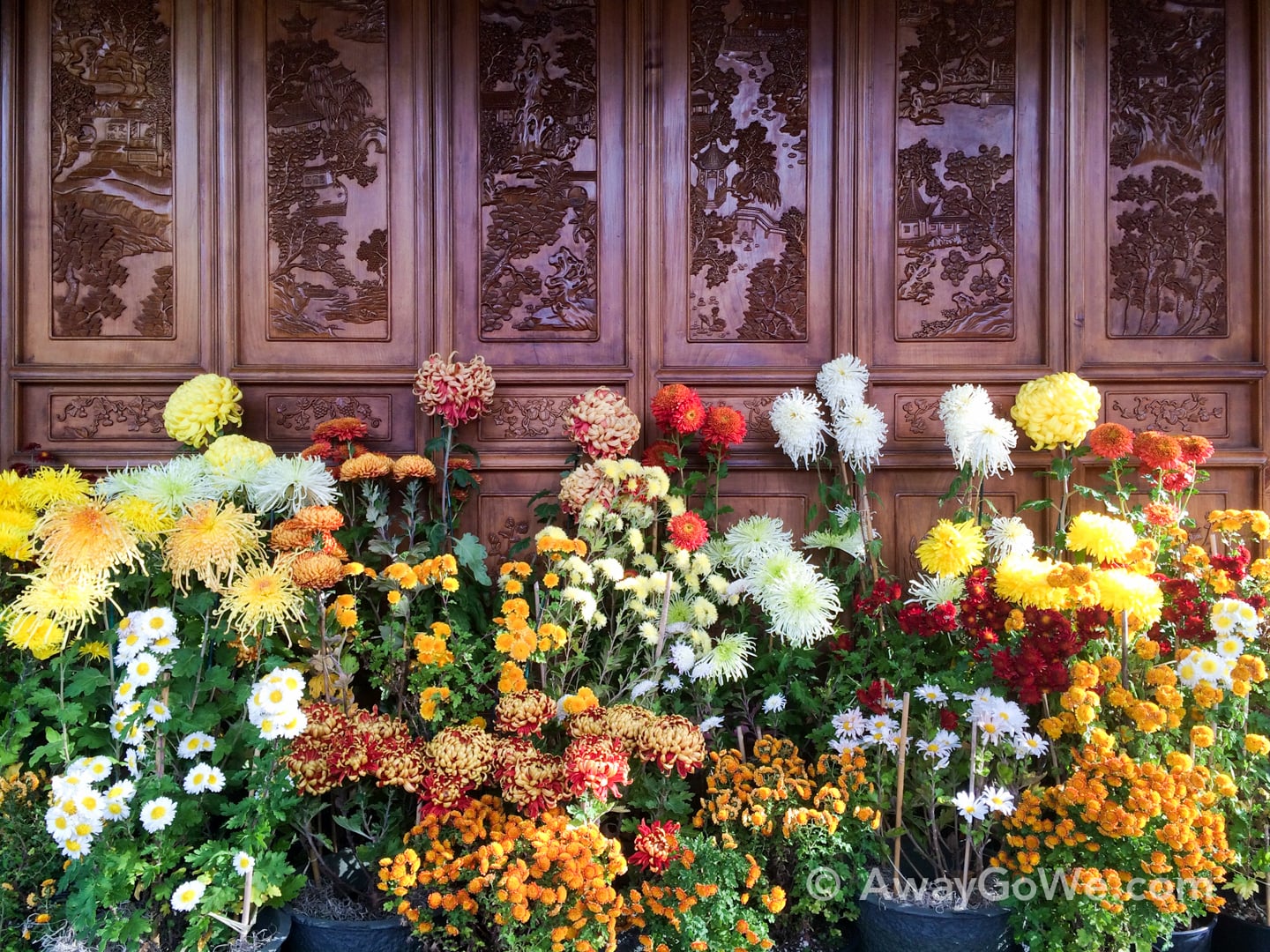
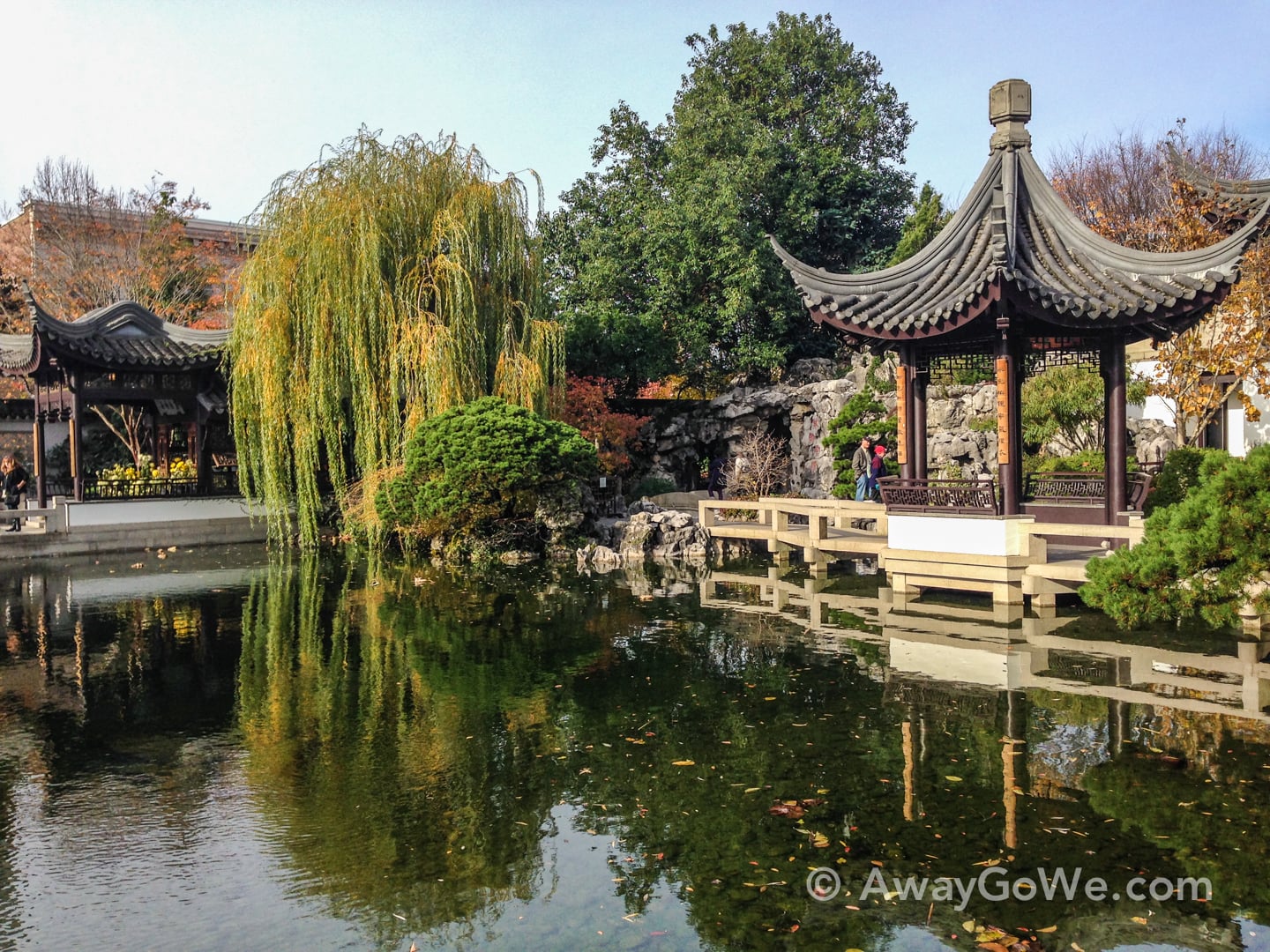
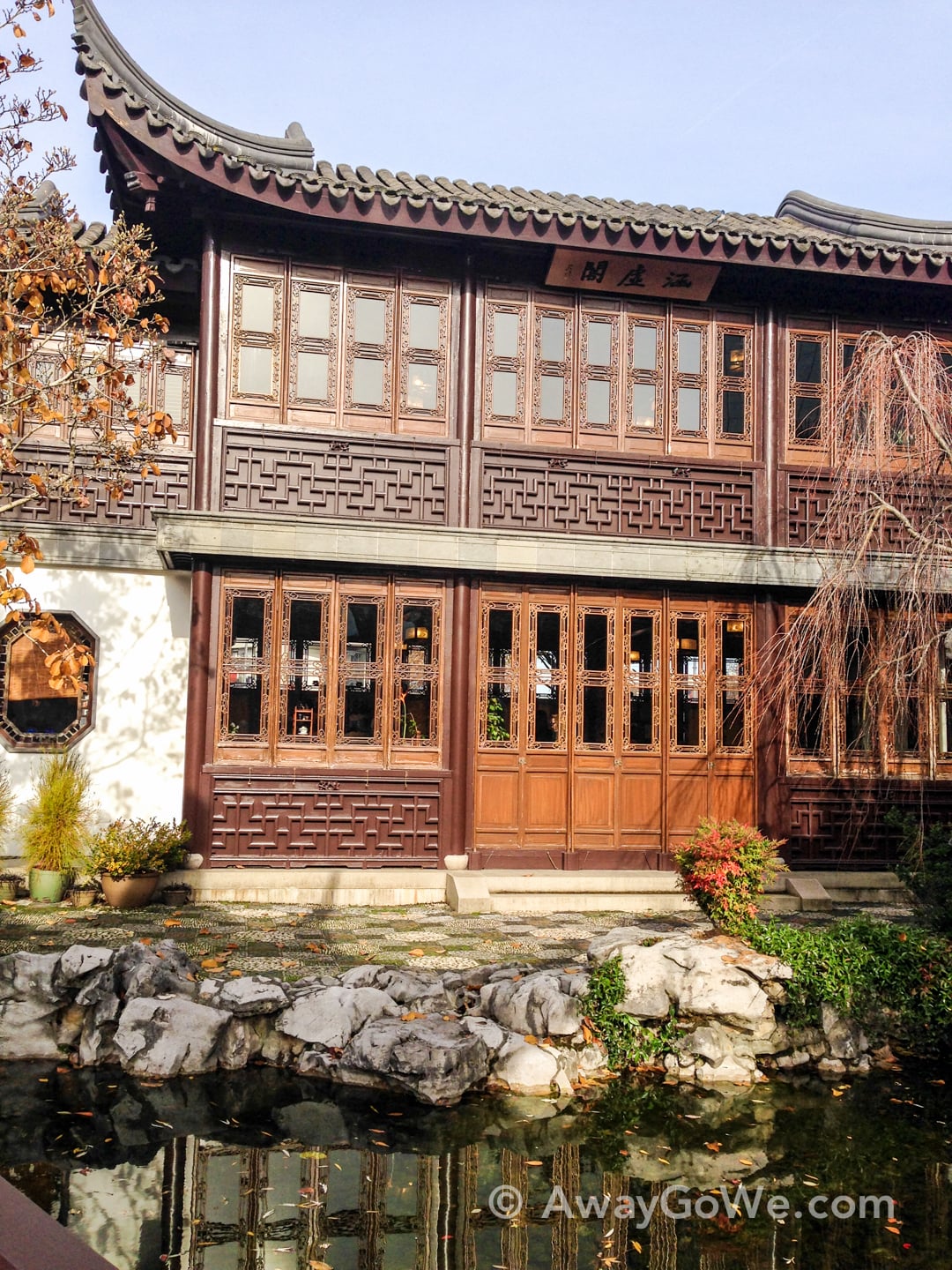

More Unique Places to Visit in Oregon
Portland Area
- 4T Trail: Discovering Portland’s Quirkiest Urban Hike
- Pittock Mansion Hike: Wildwood + Lower Macleay Trail
- Leach Botanical Garden: Portland Hidden Wonder
- Portland’s Alameda Ridge Stairs: Our First-Hand Guide
- Trillium Lake Hike in Oregon: All-Season Visitor’s Guide
- Hiking Tom McCall Point Trail + Rowena Plateau
Around Oregon